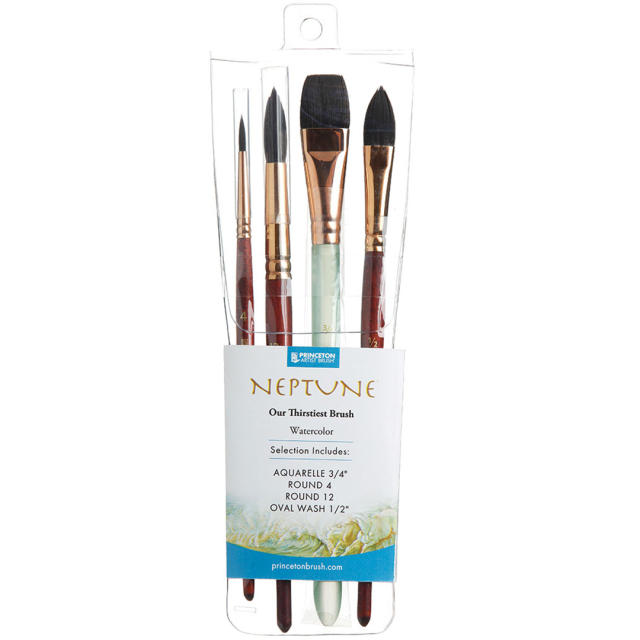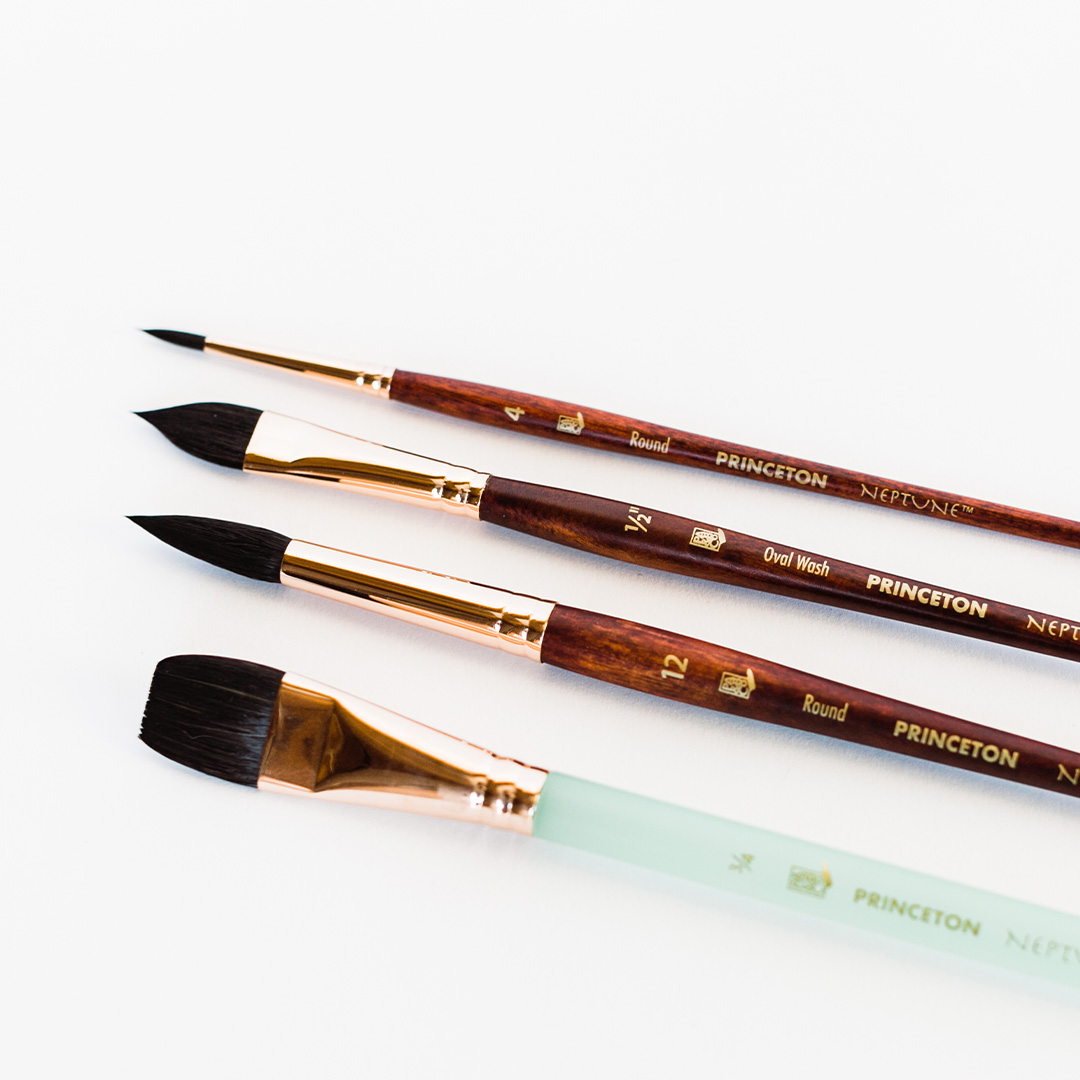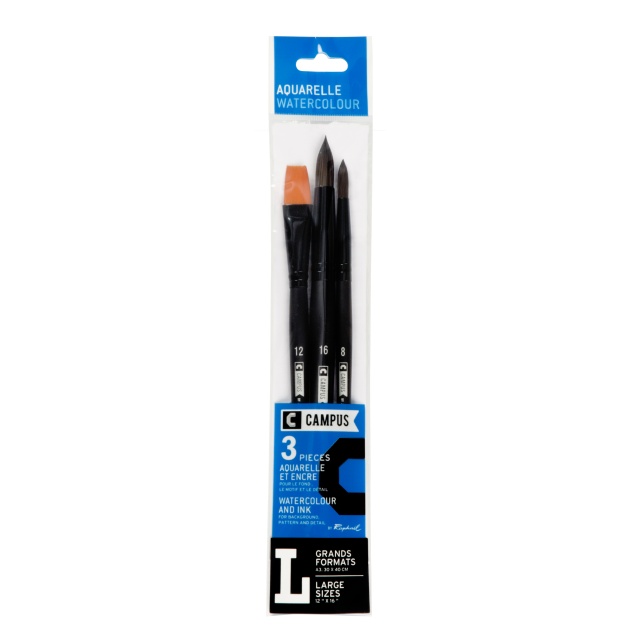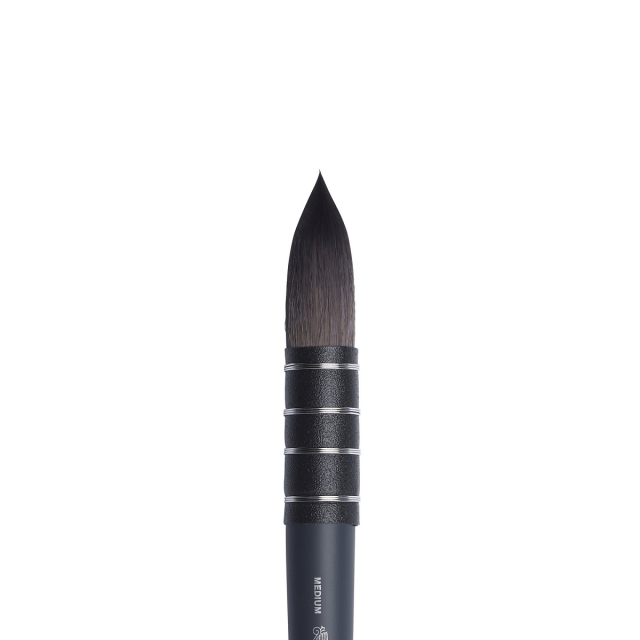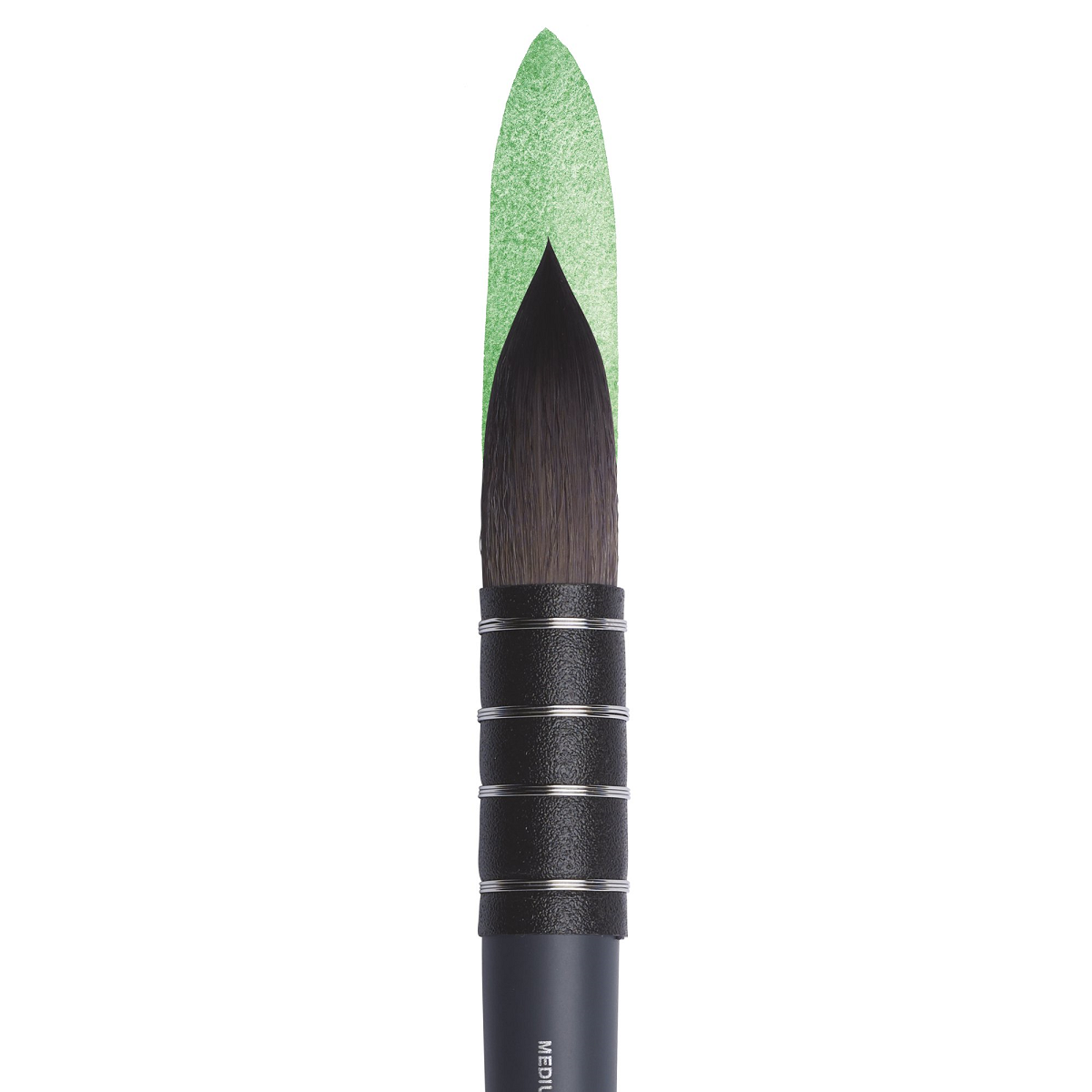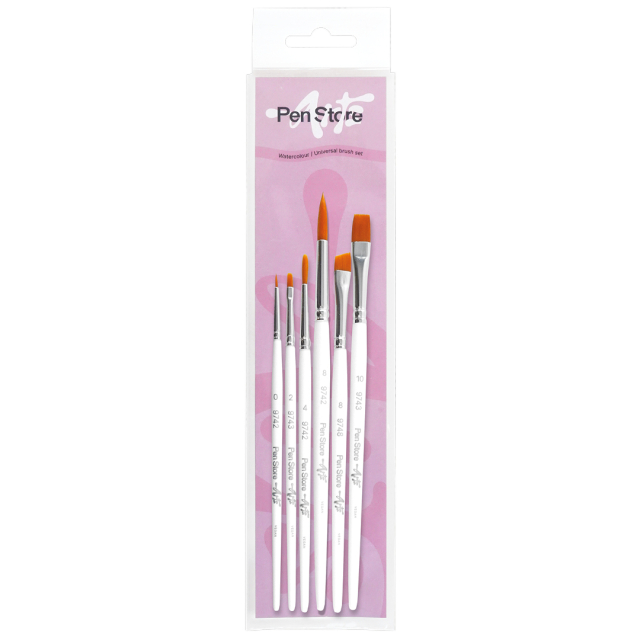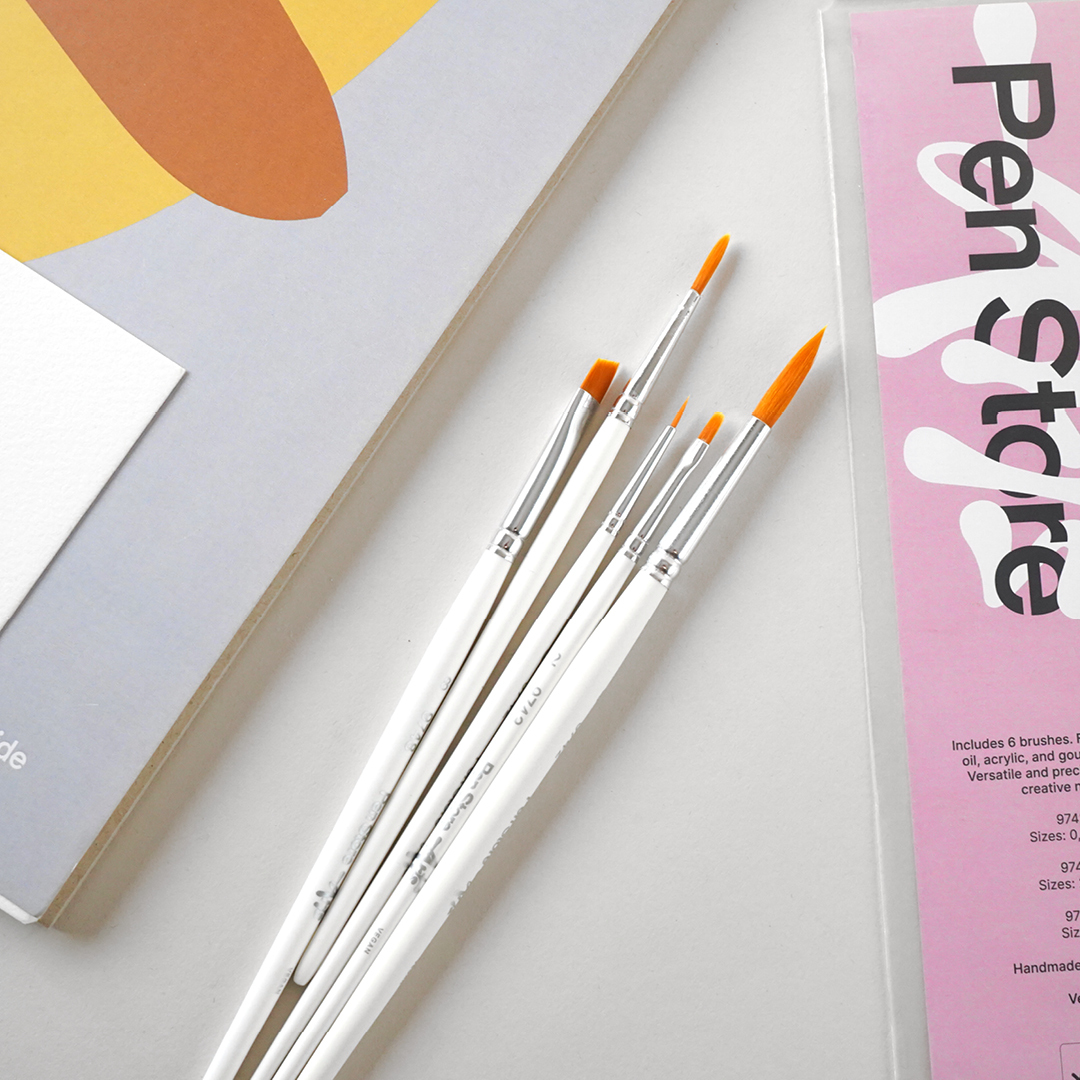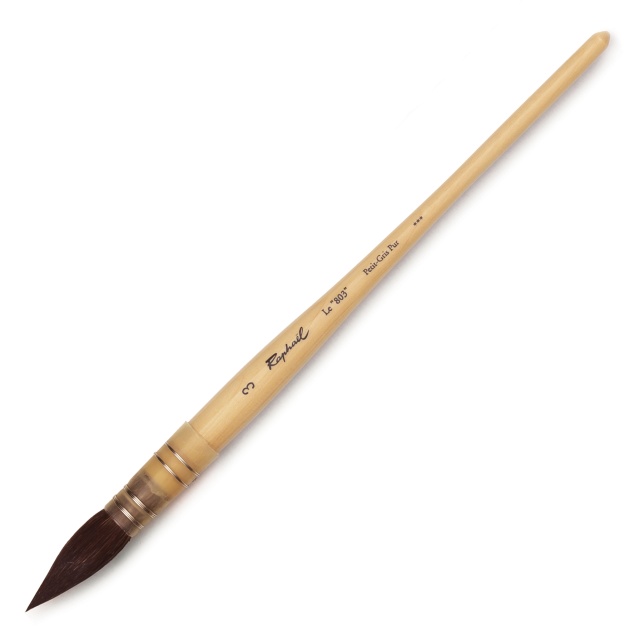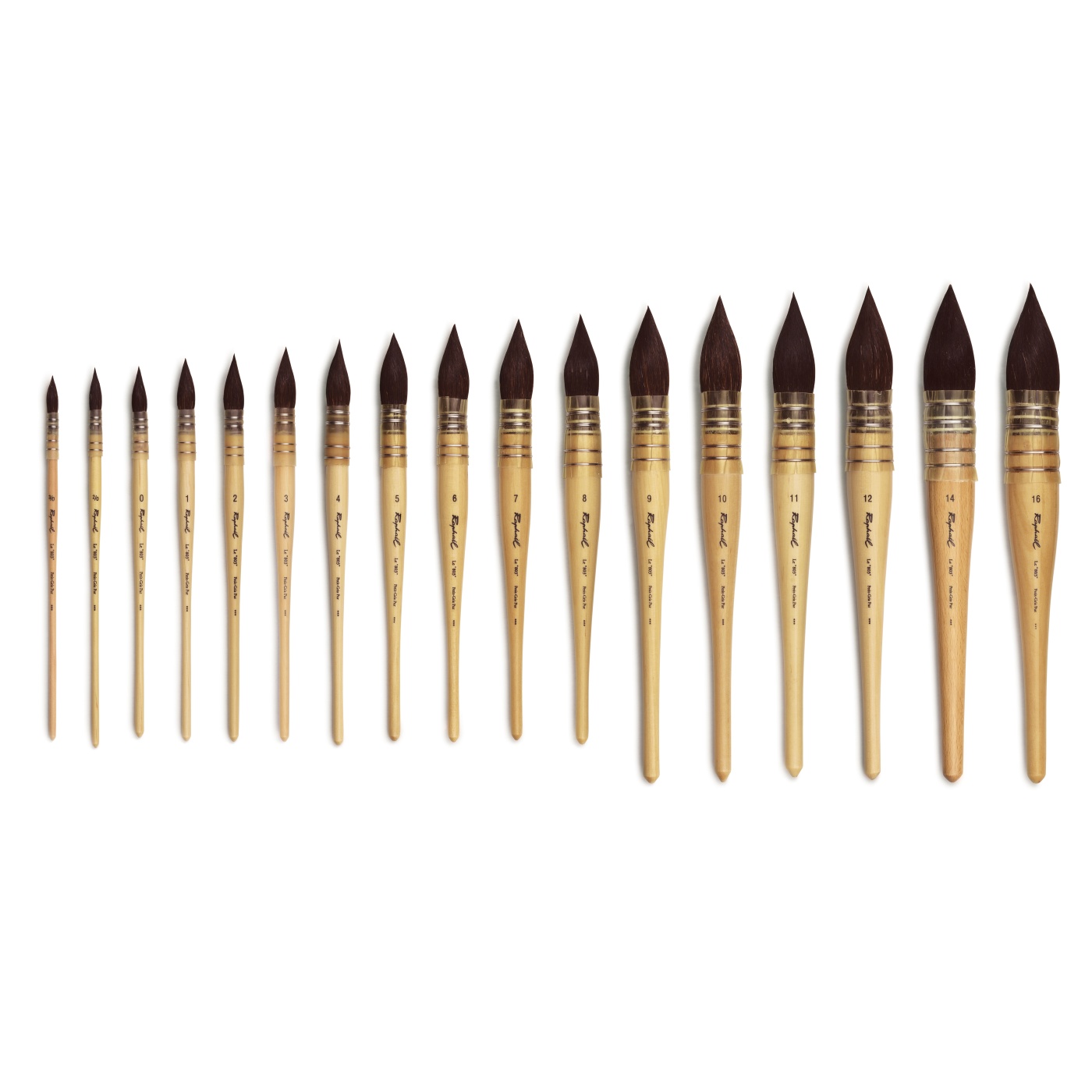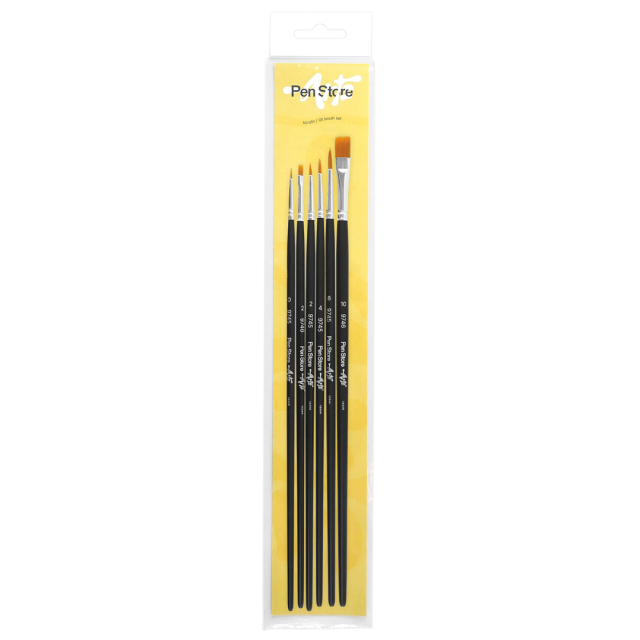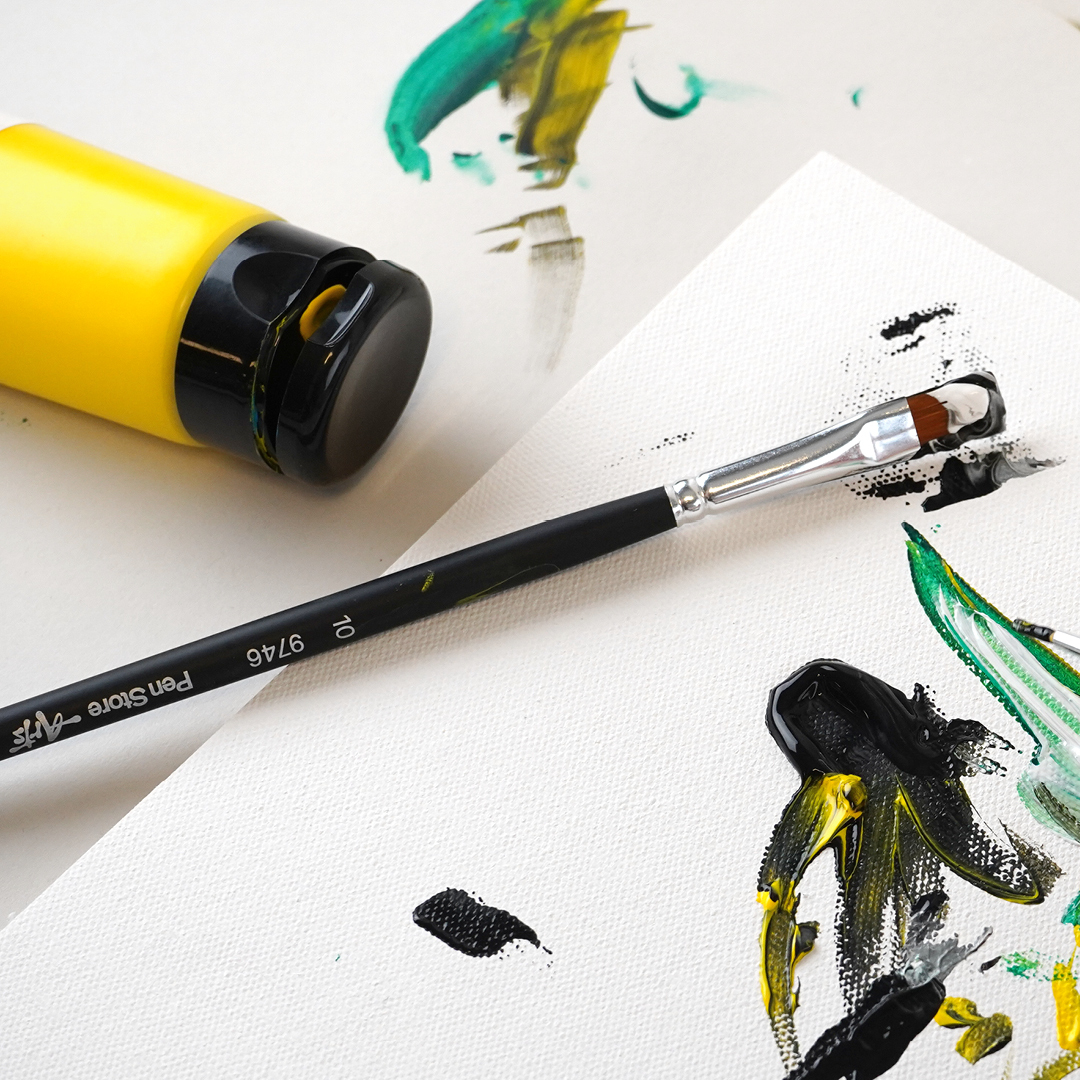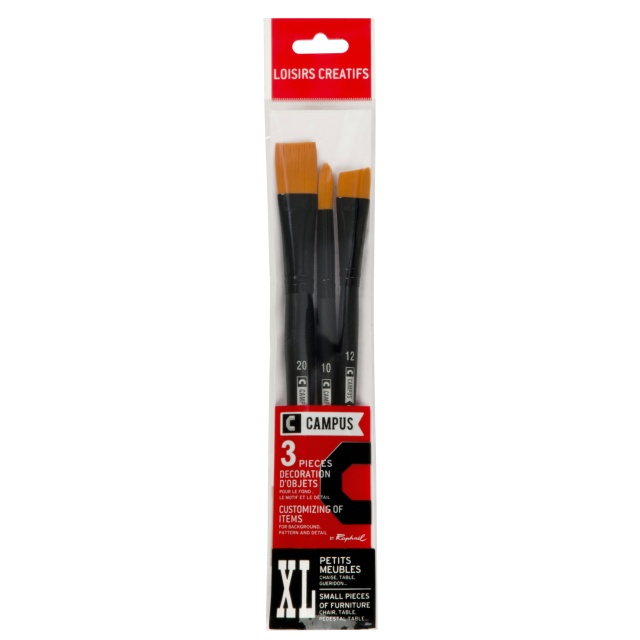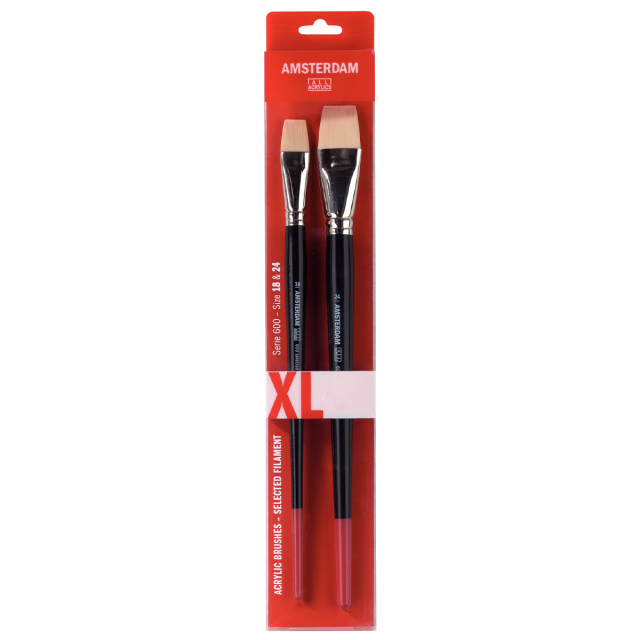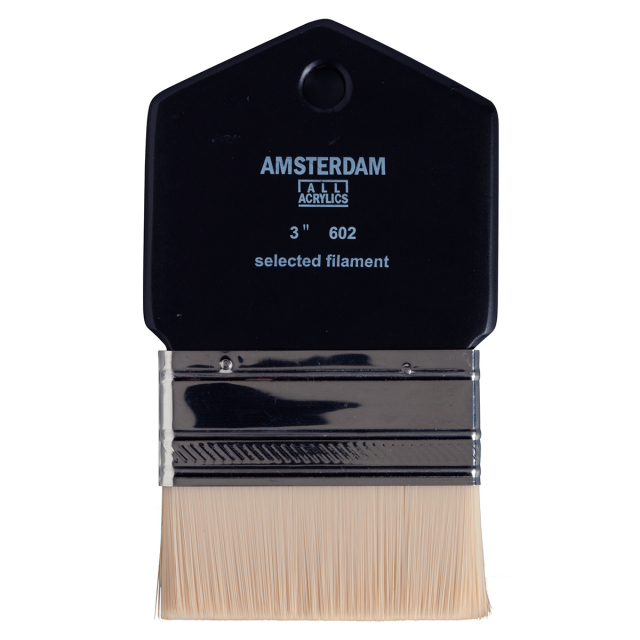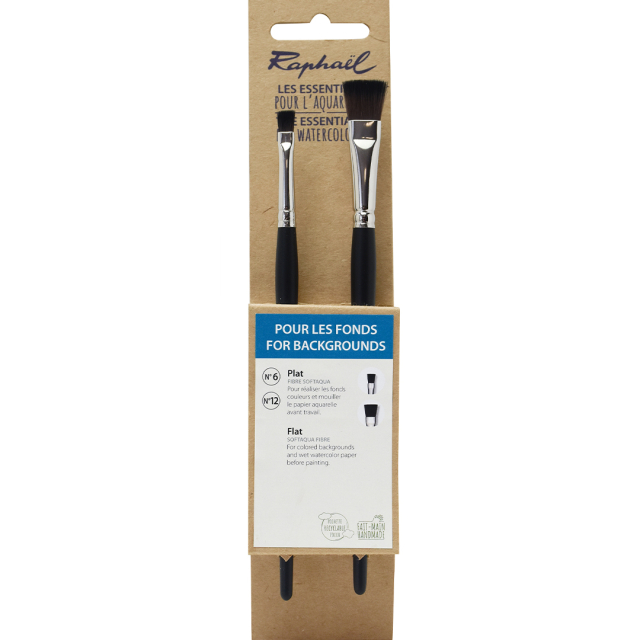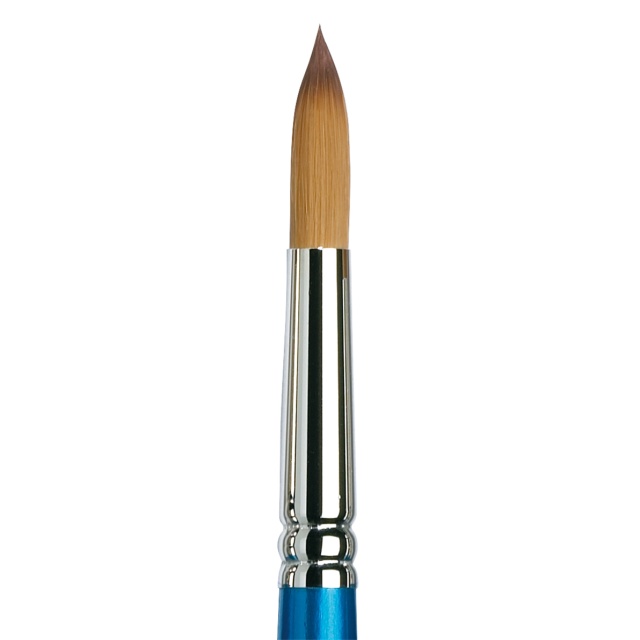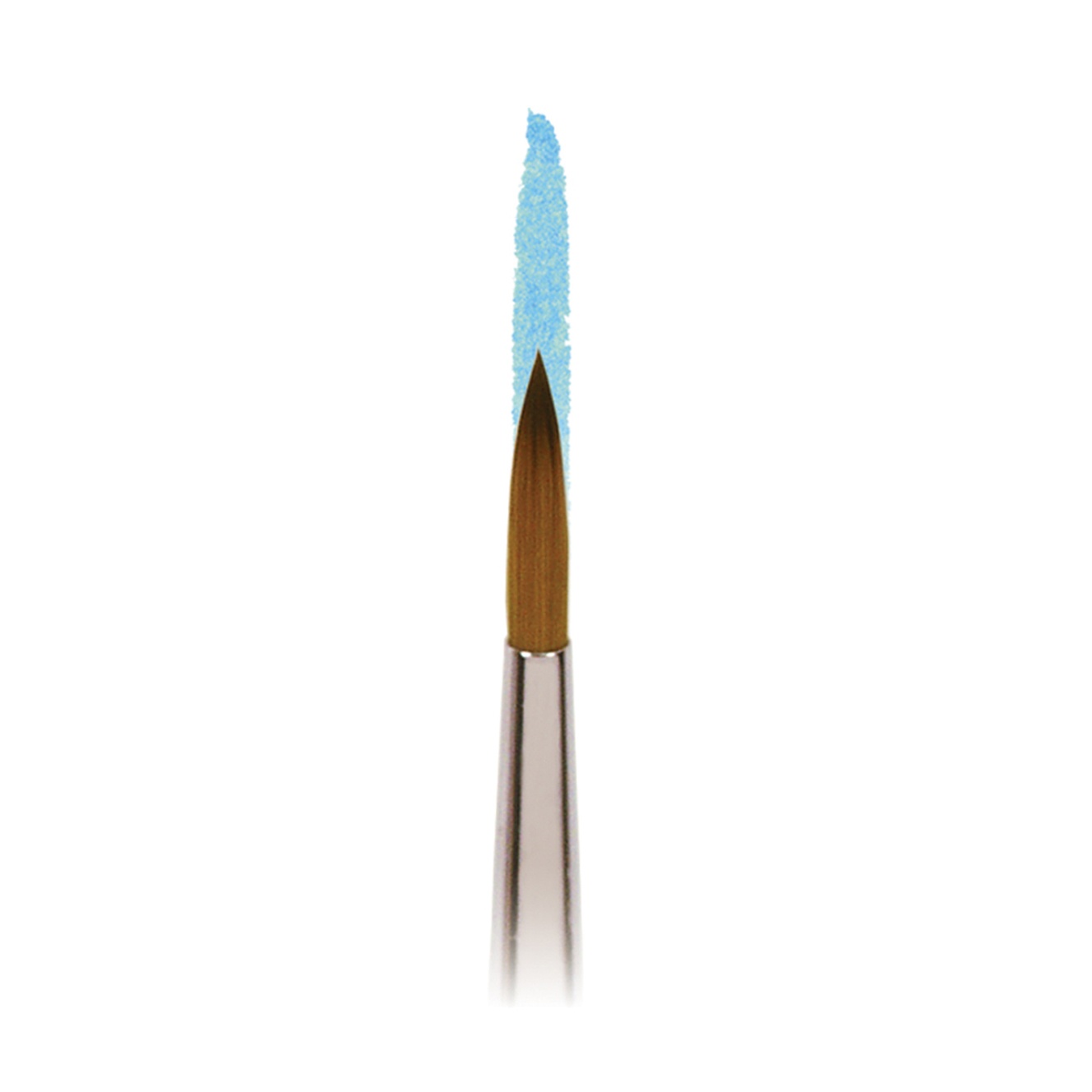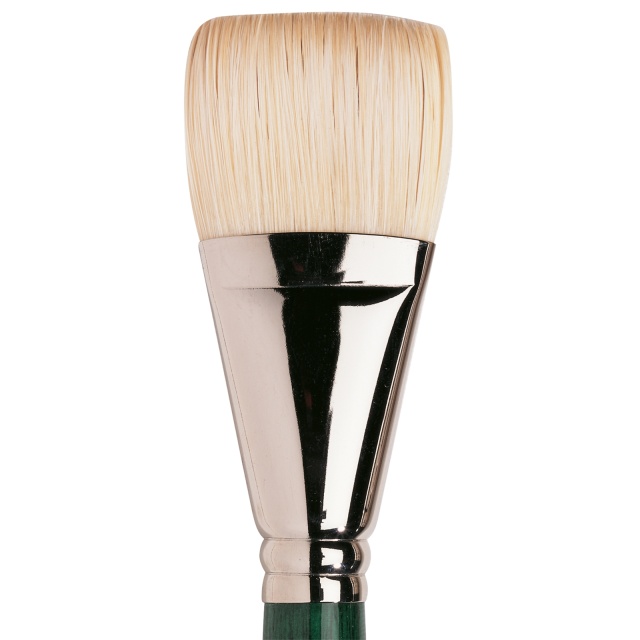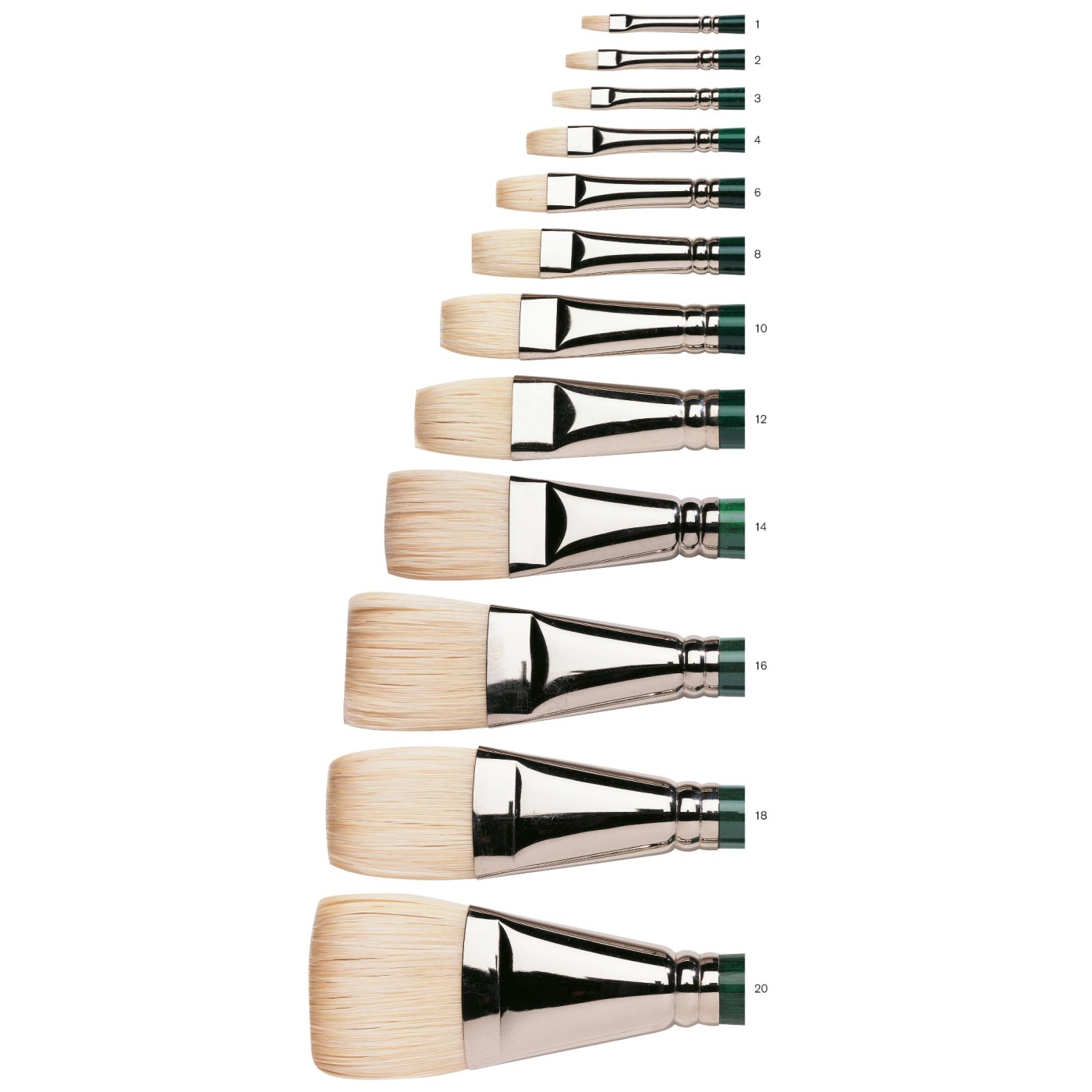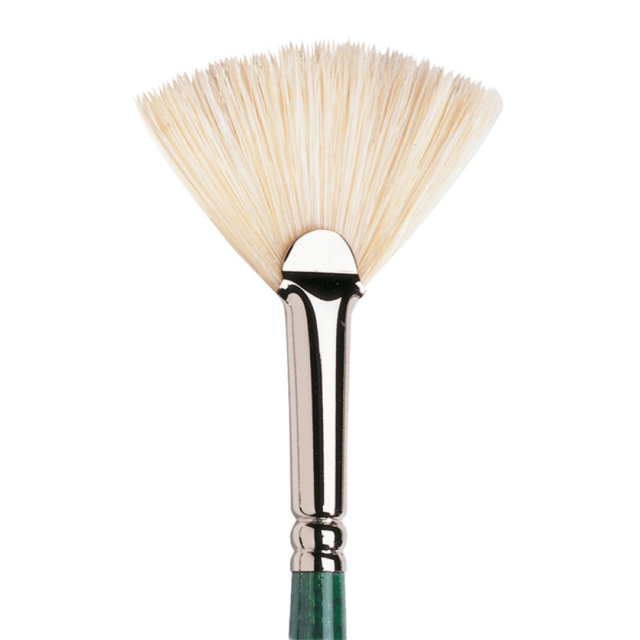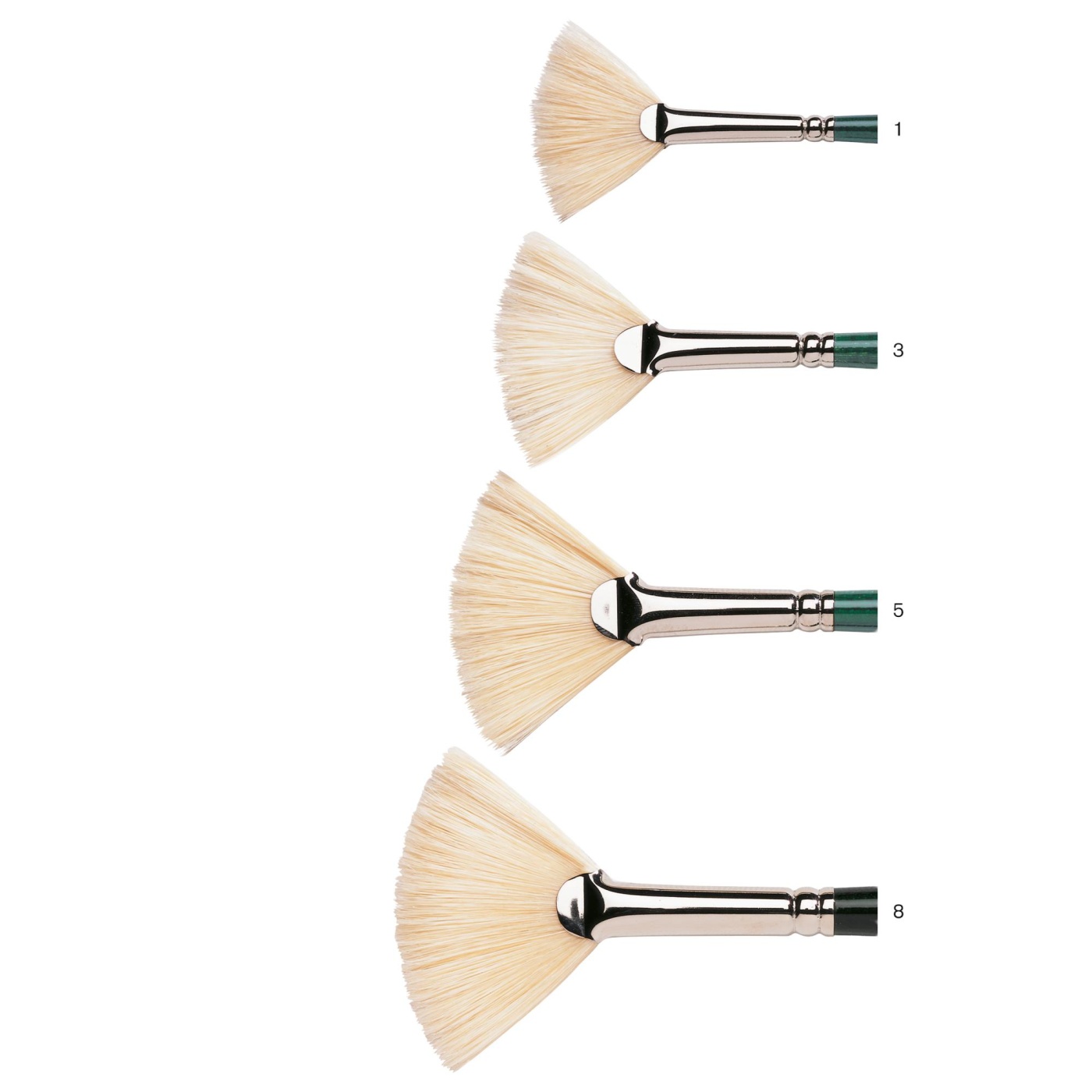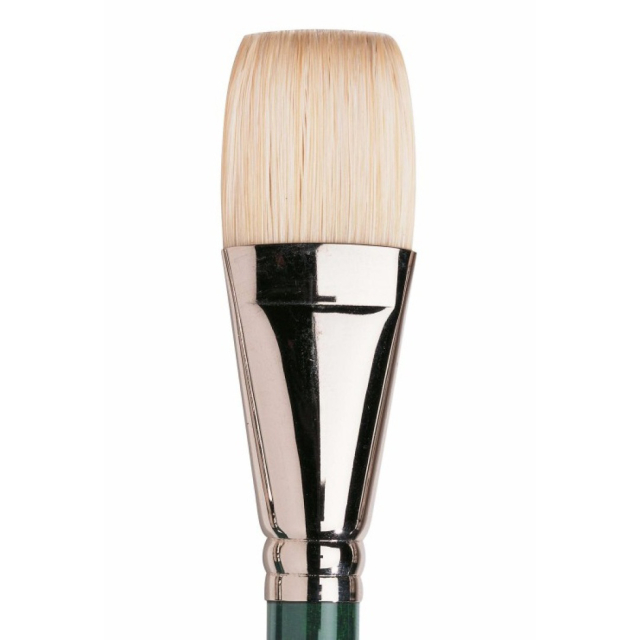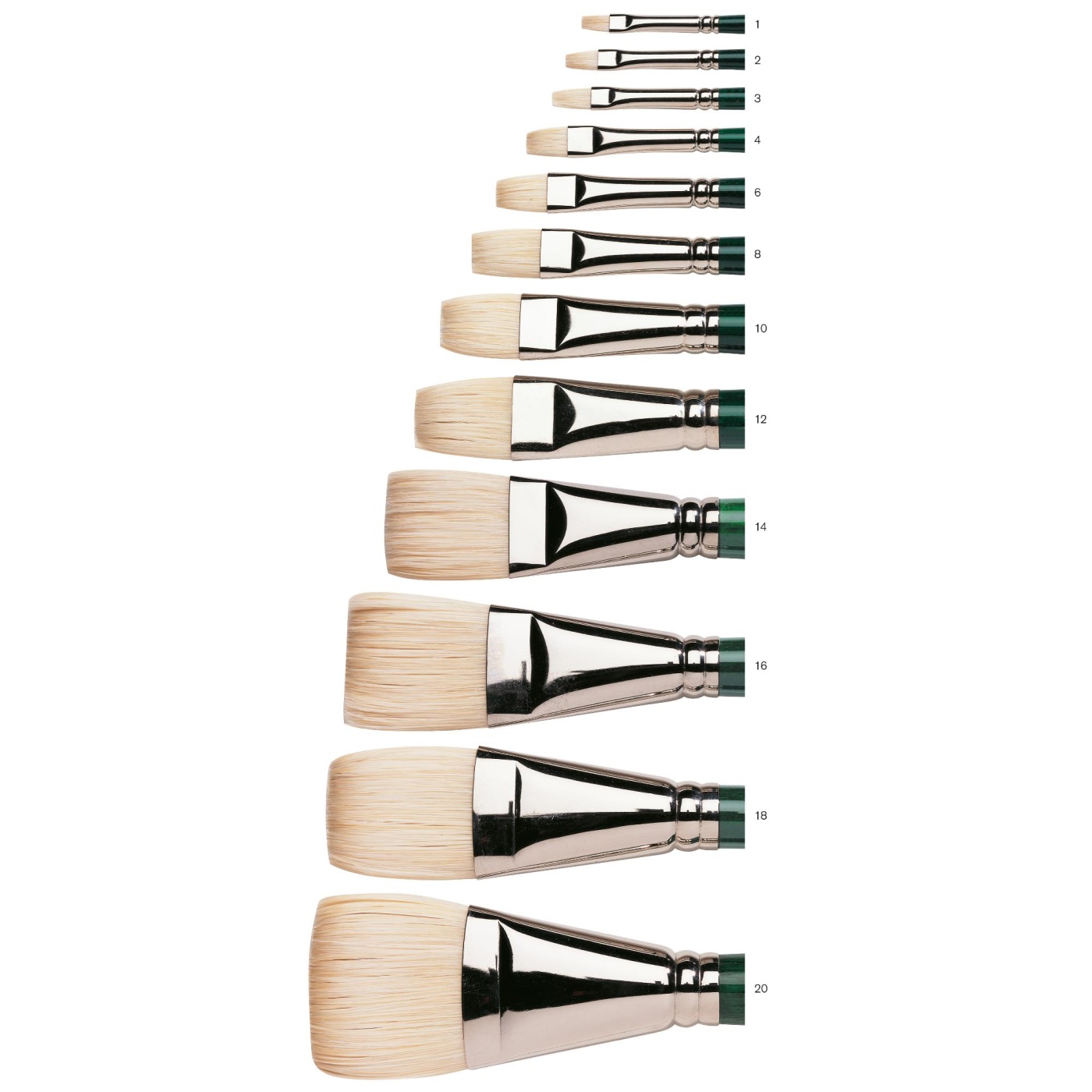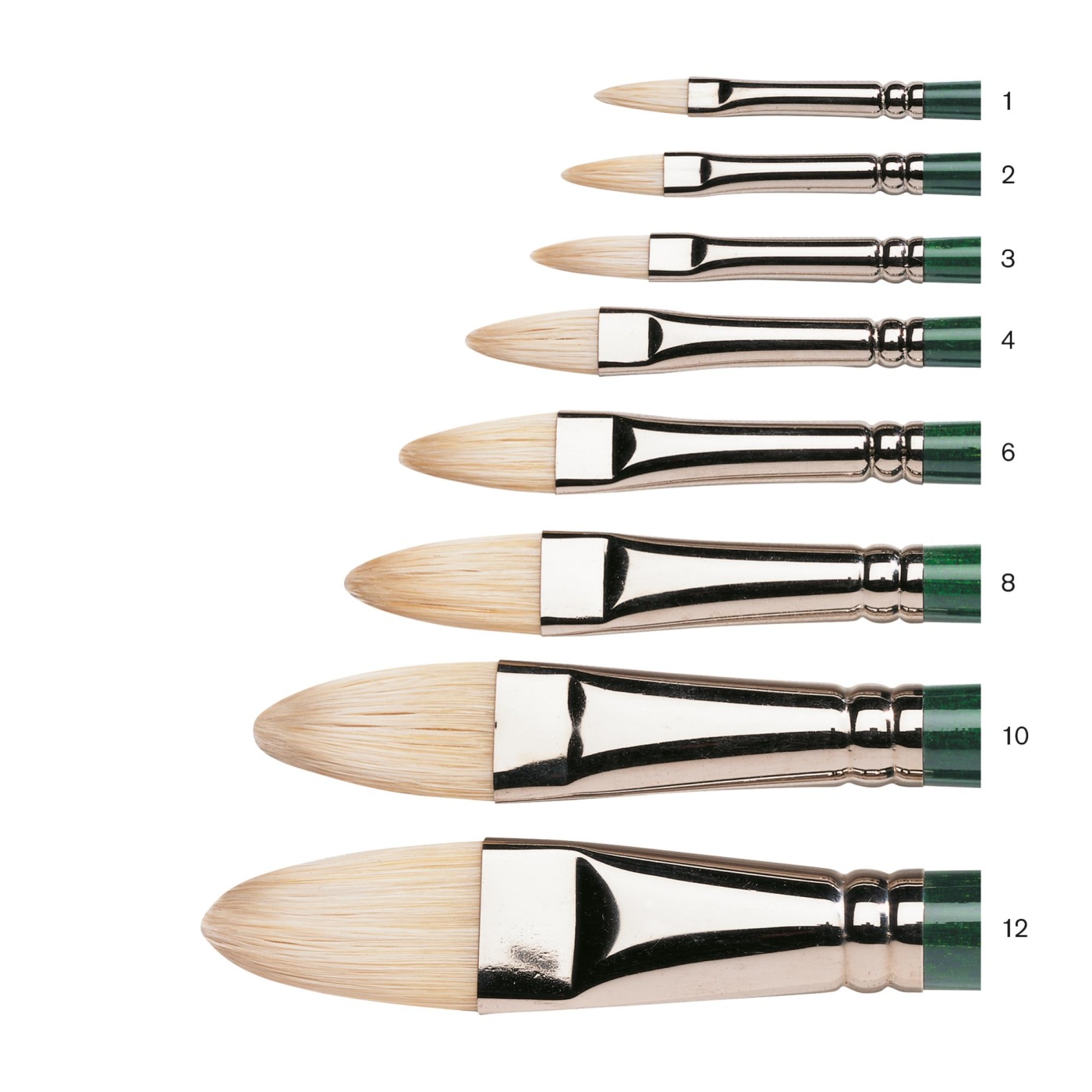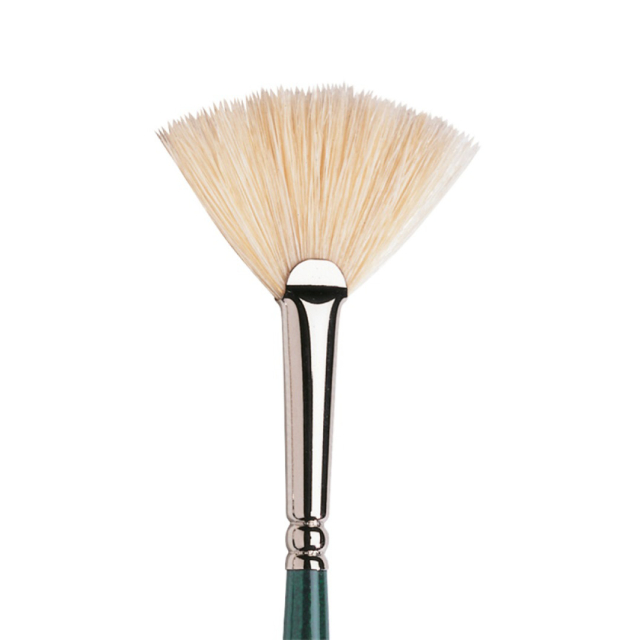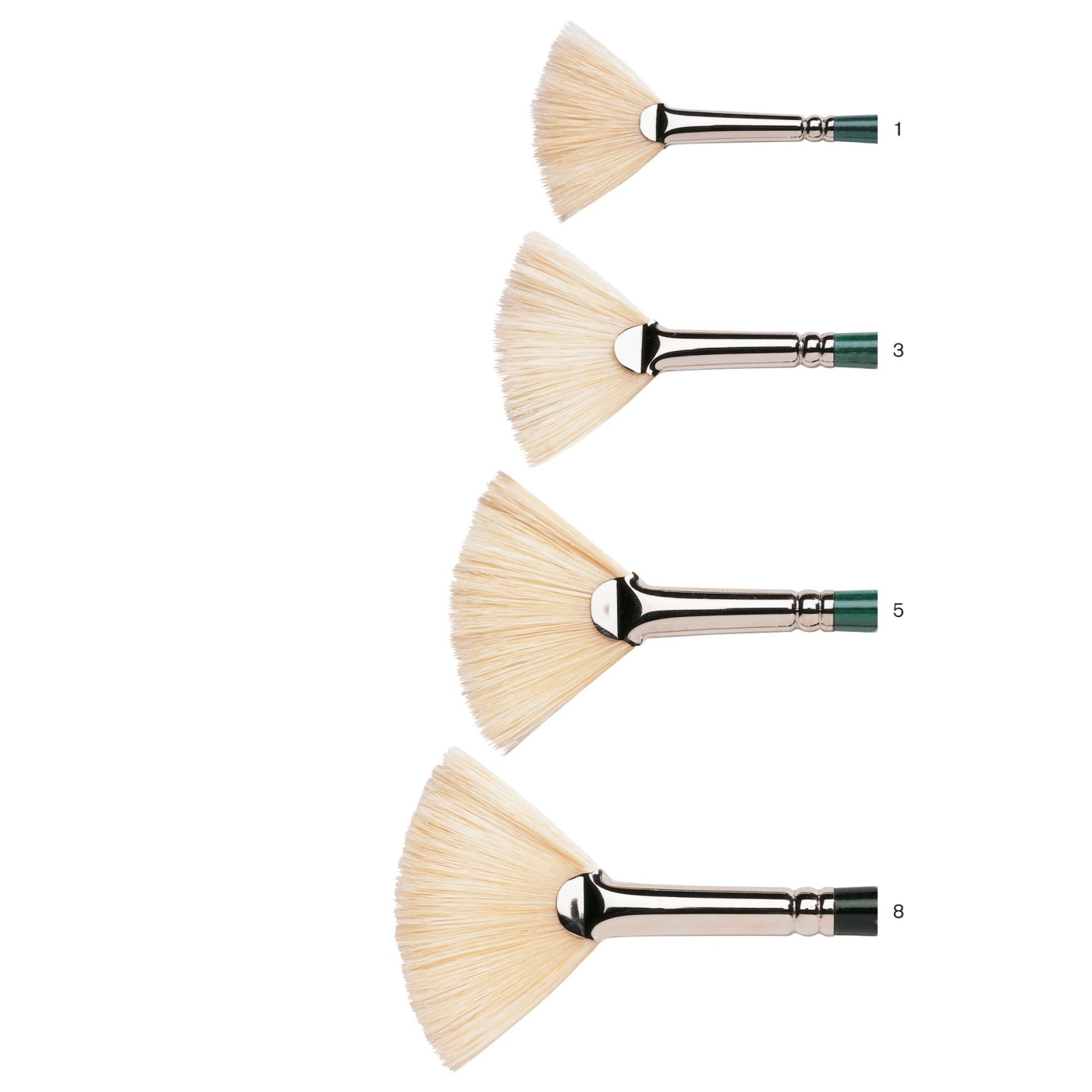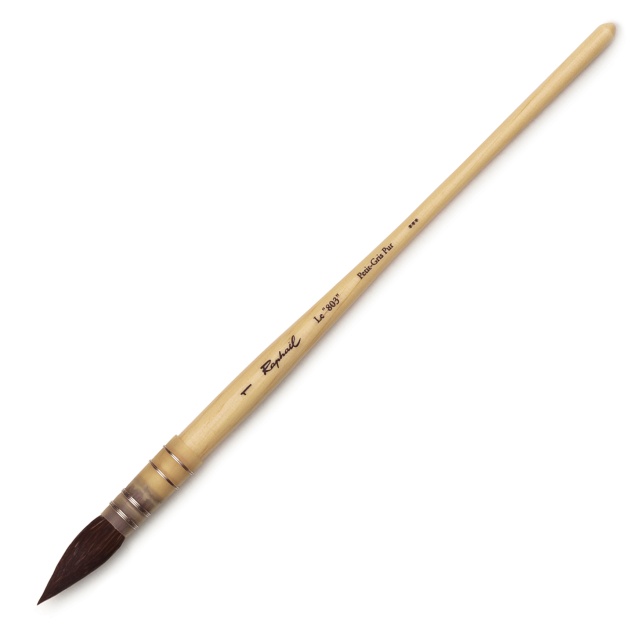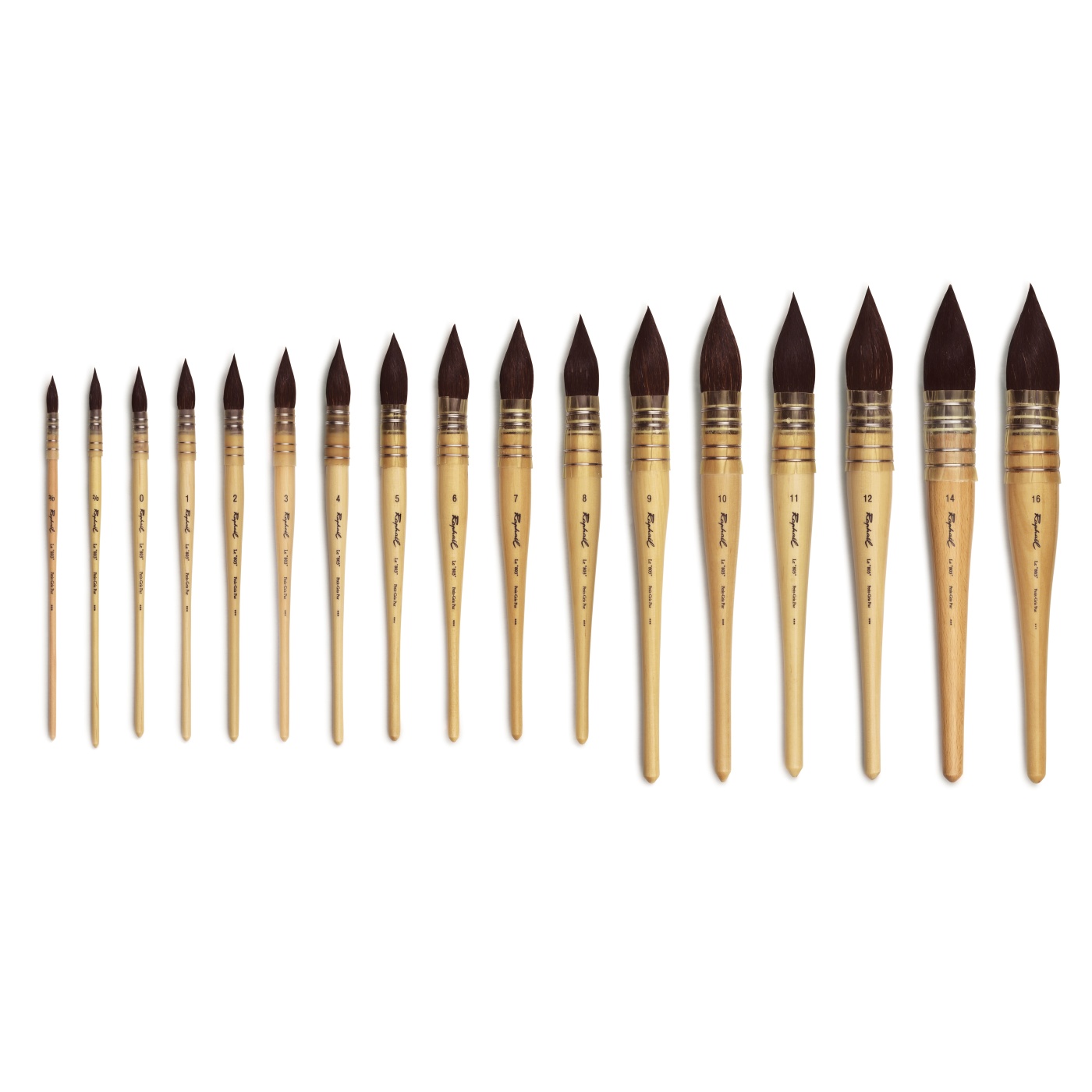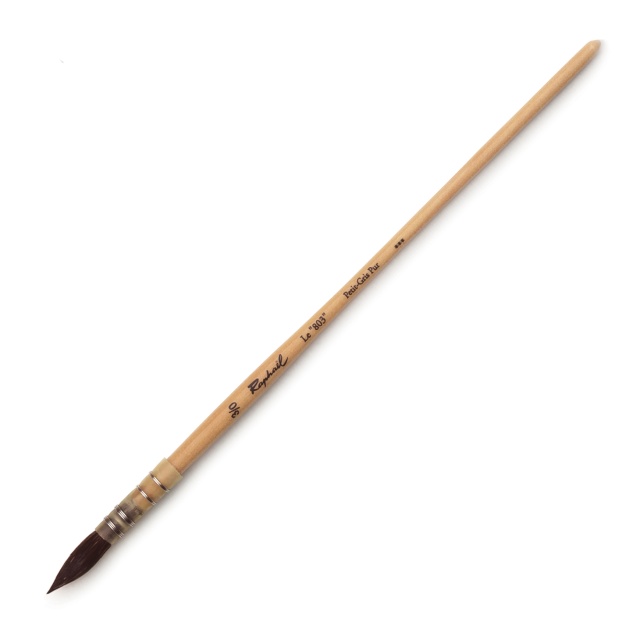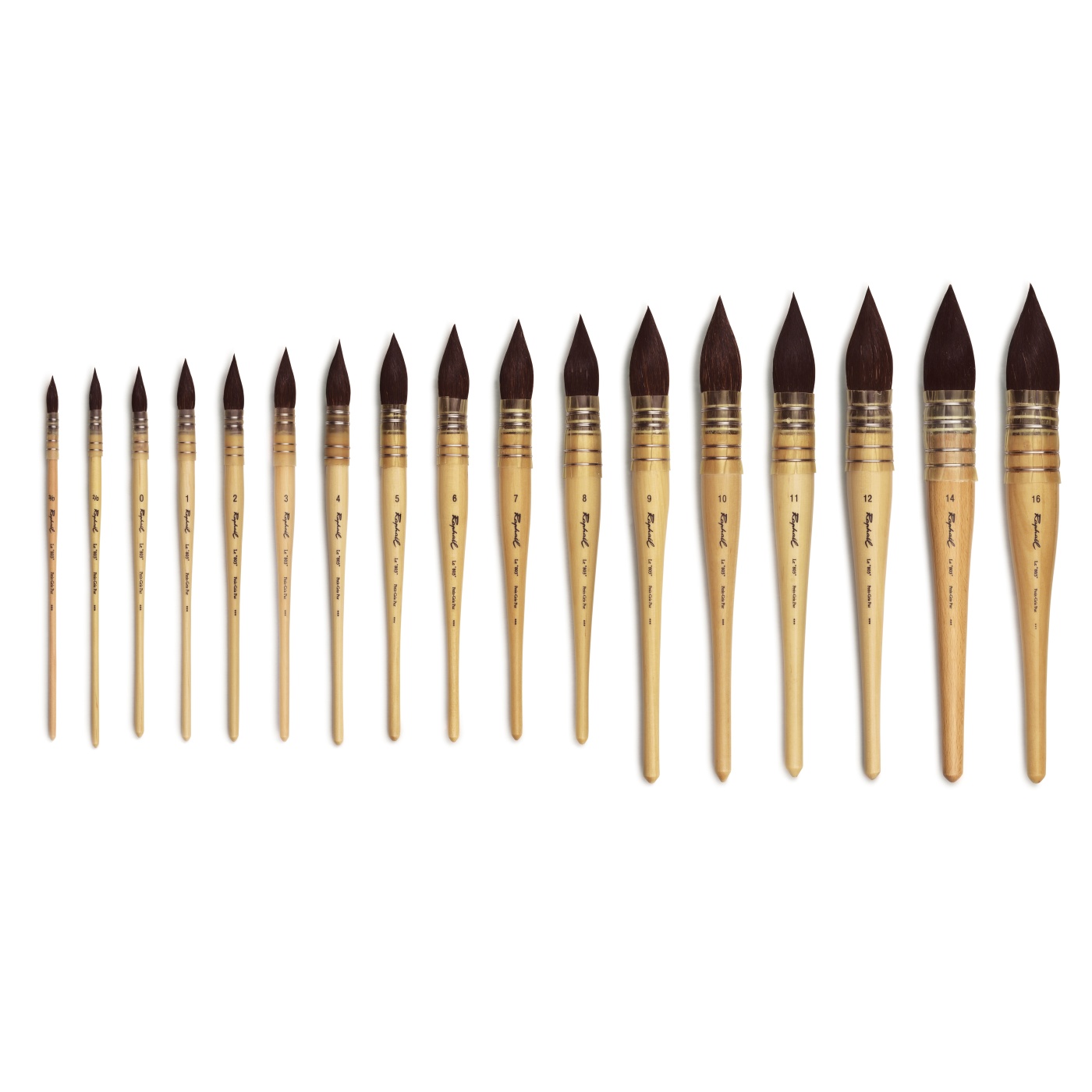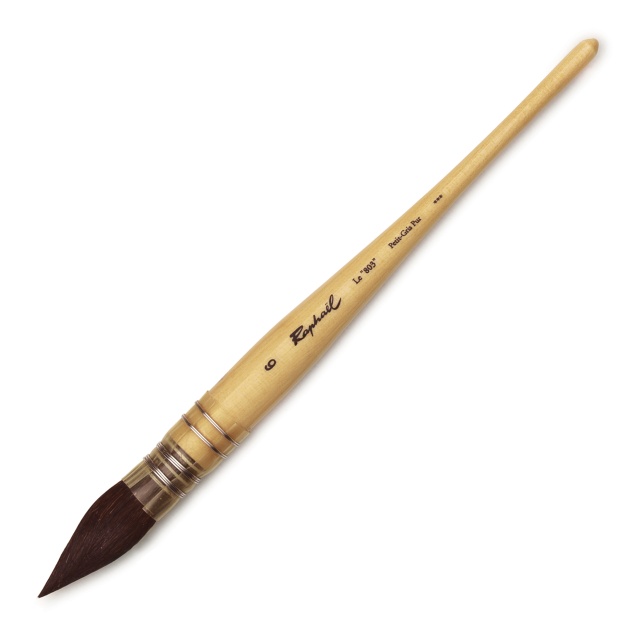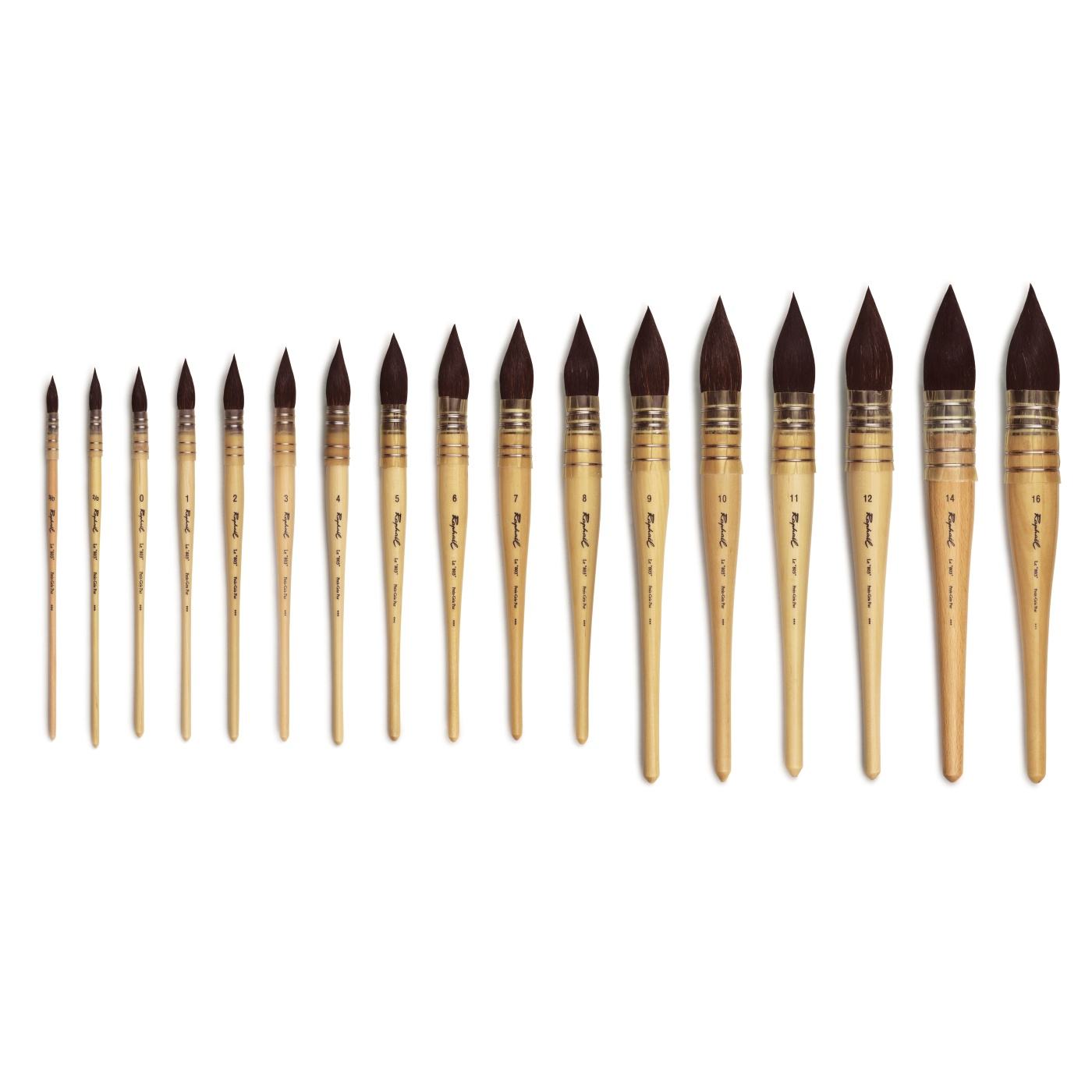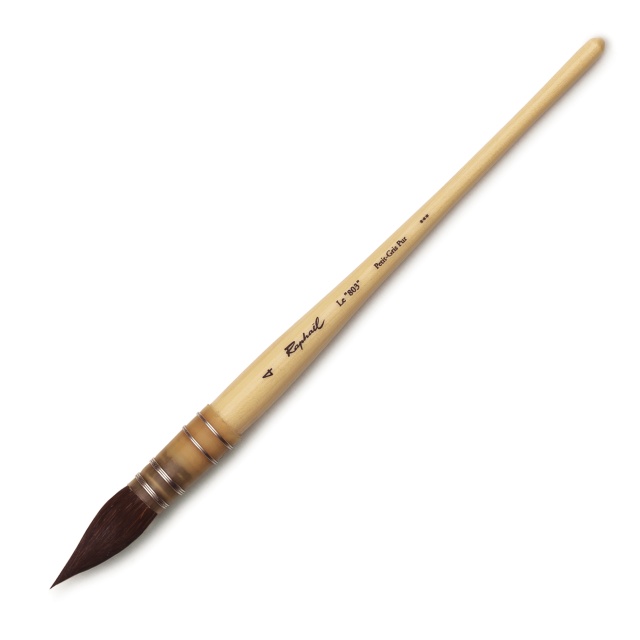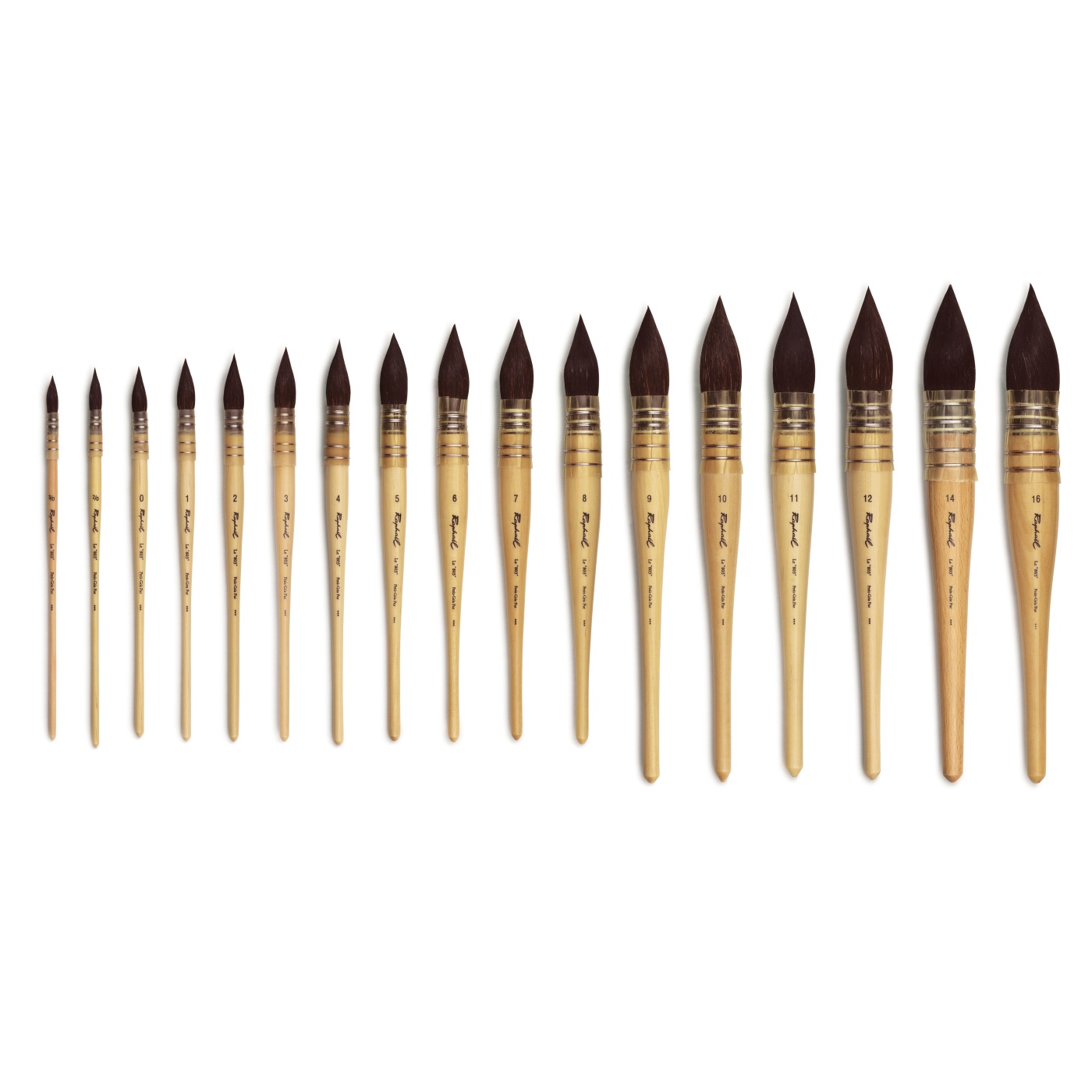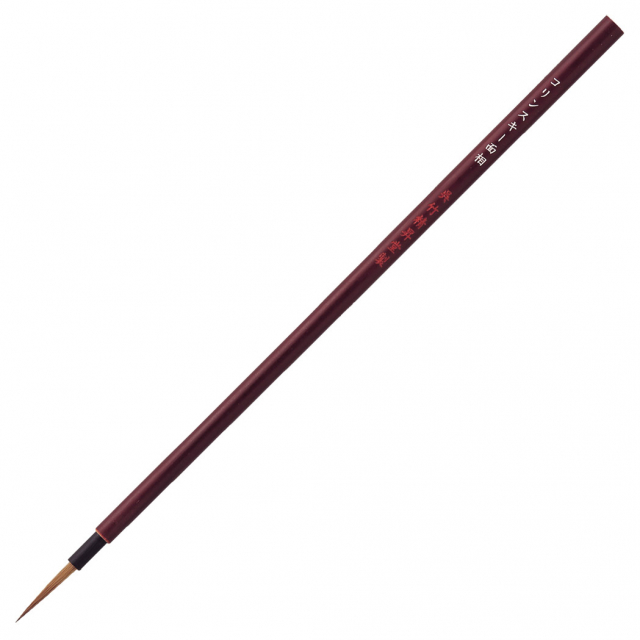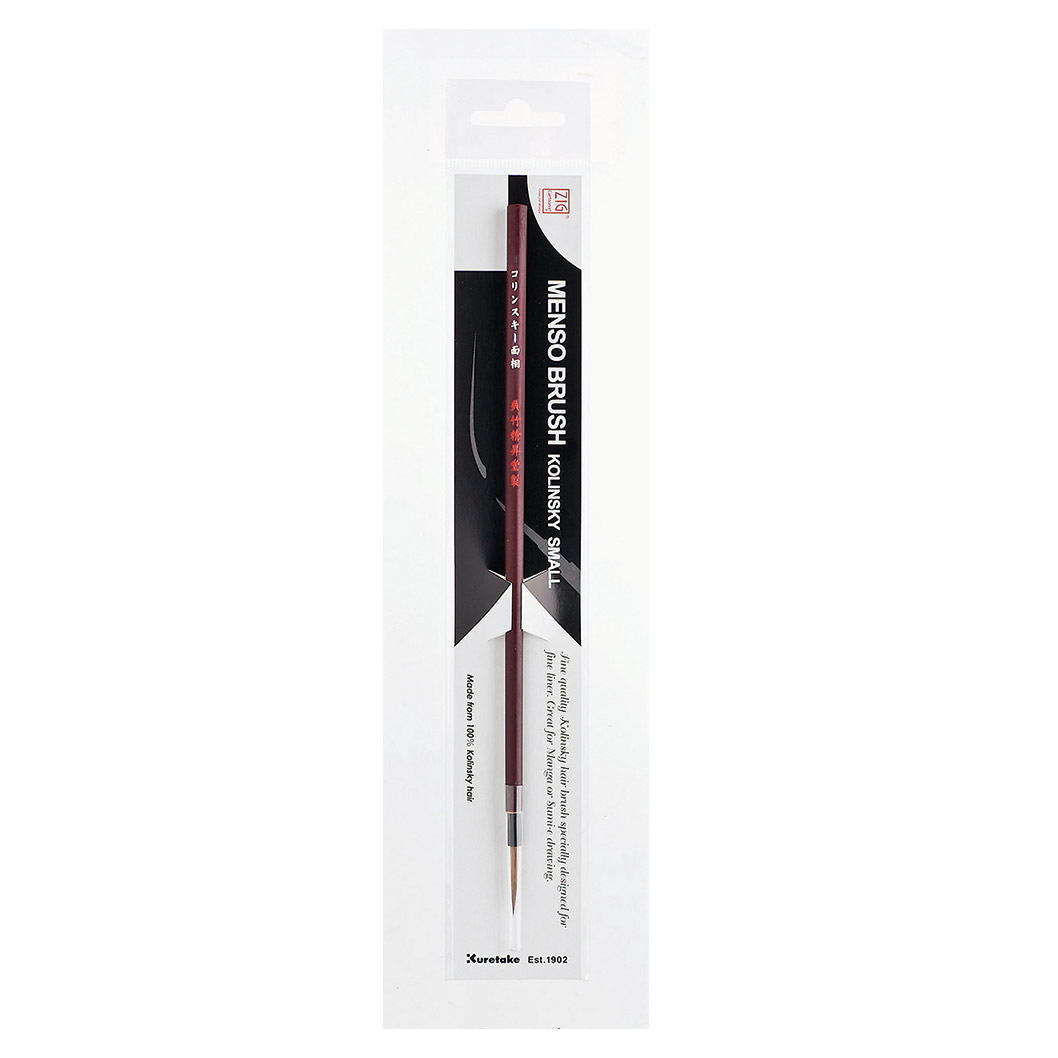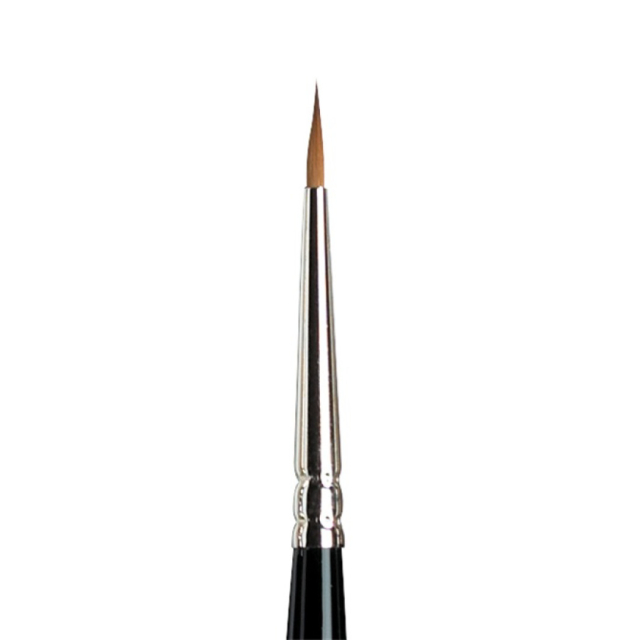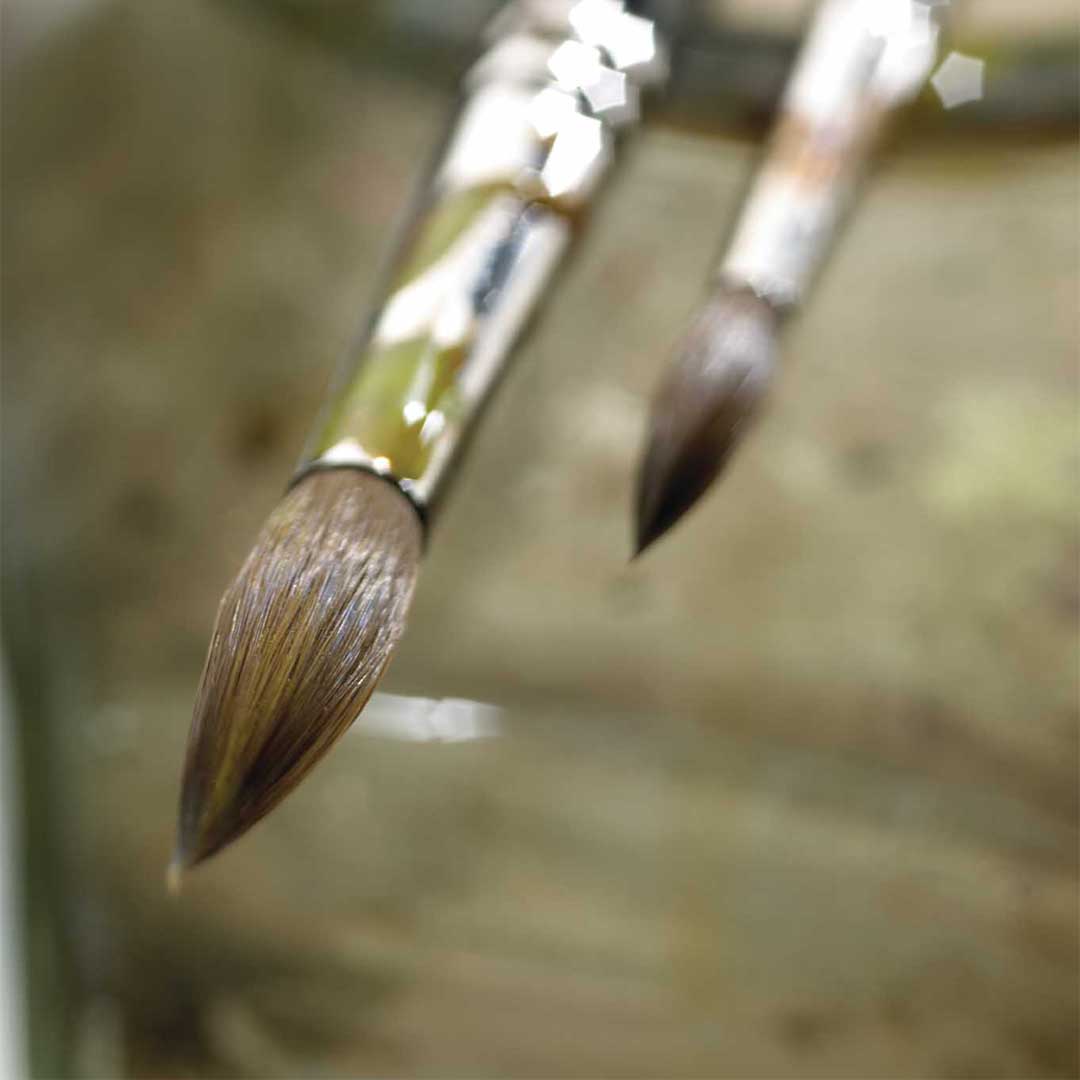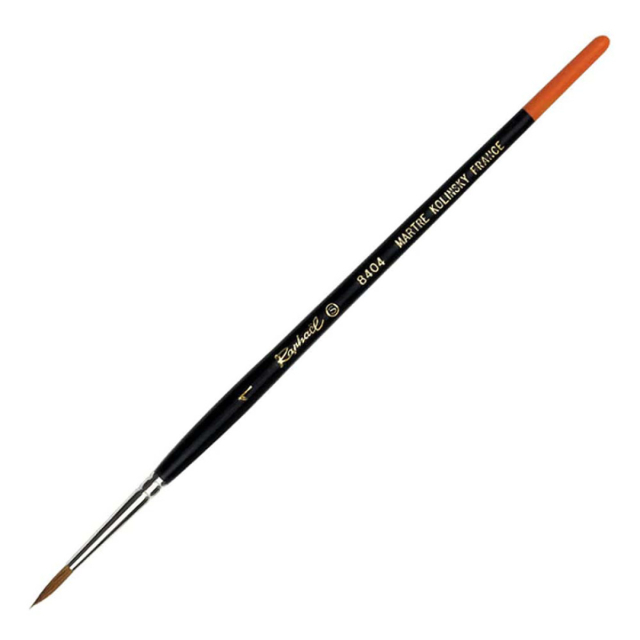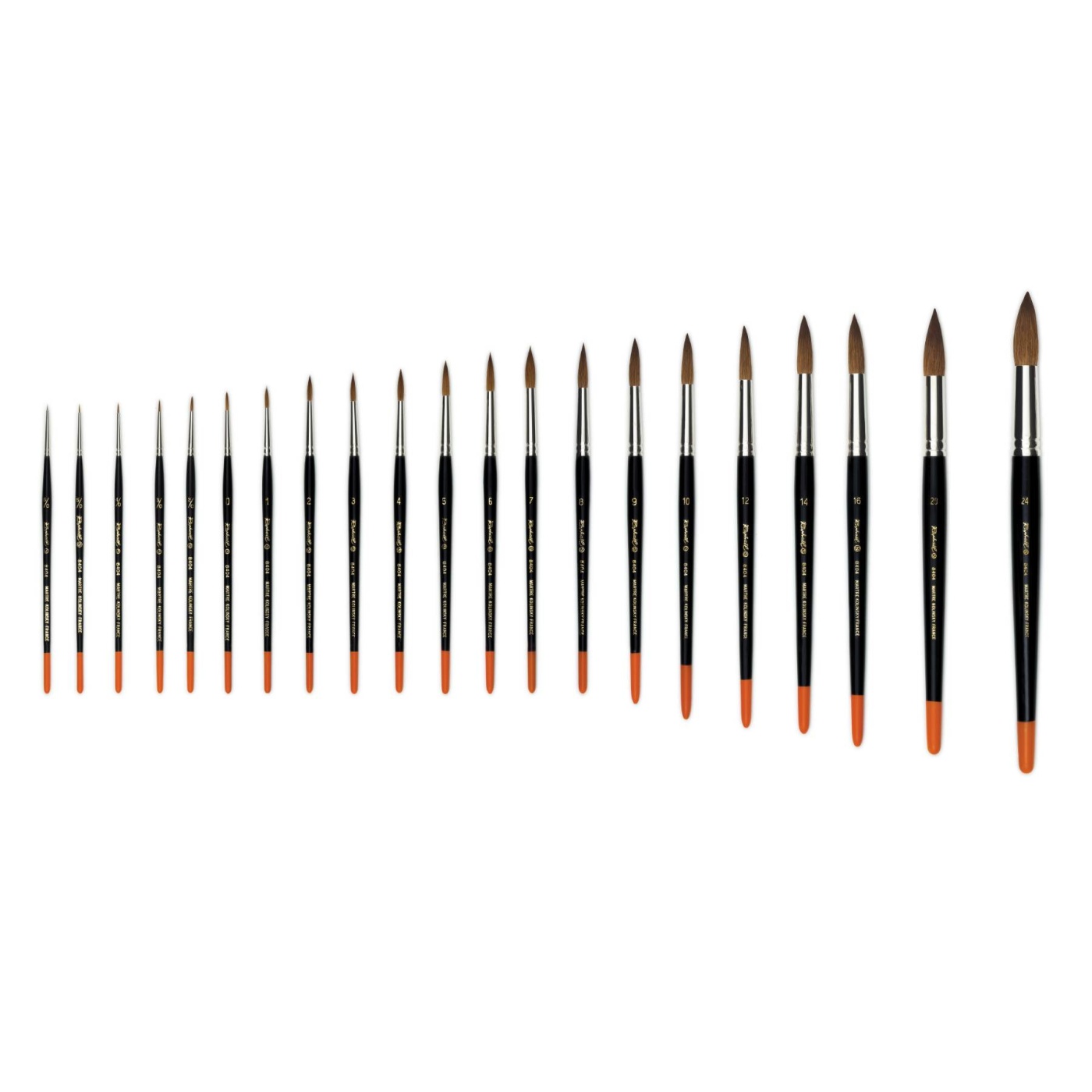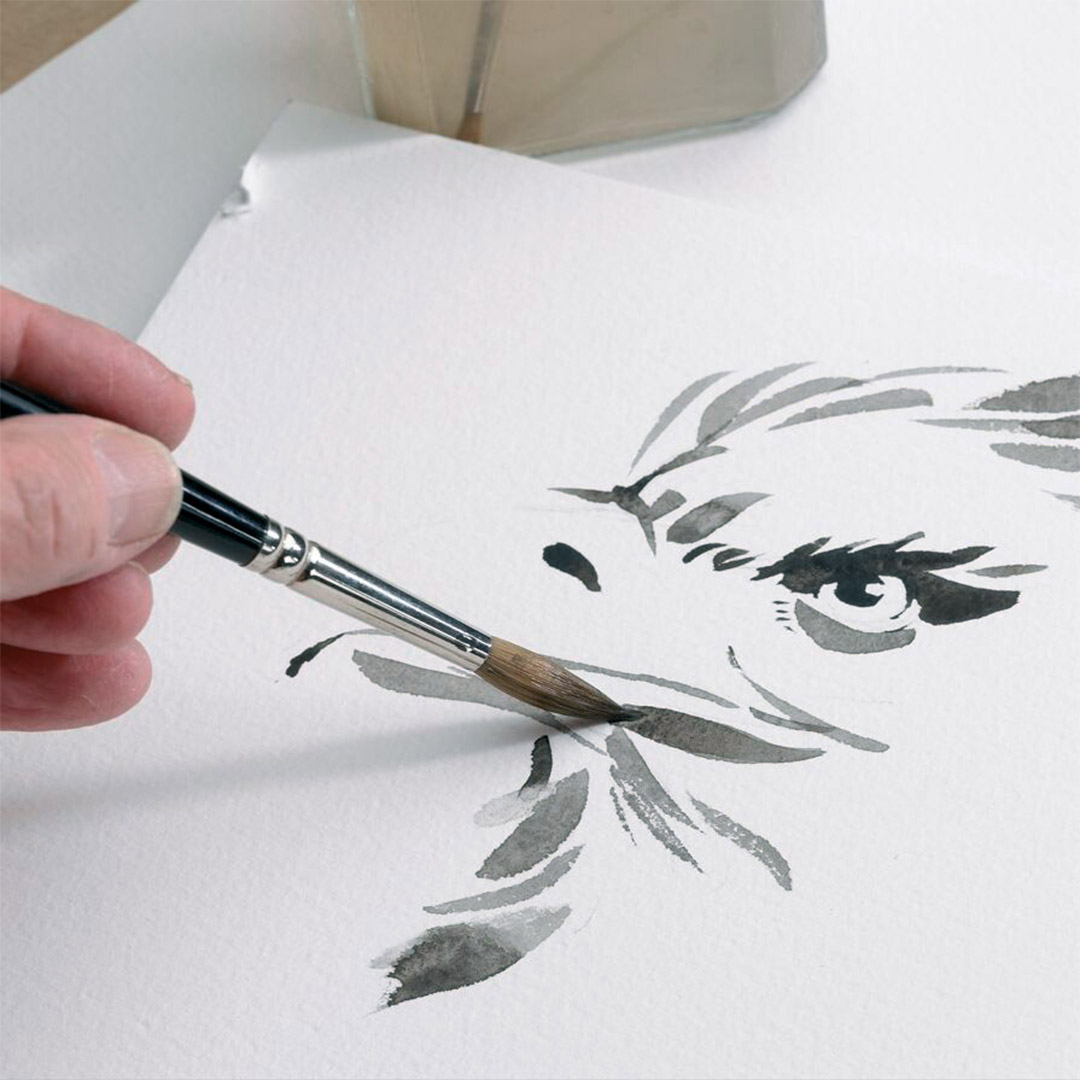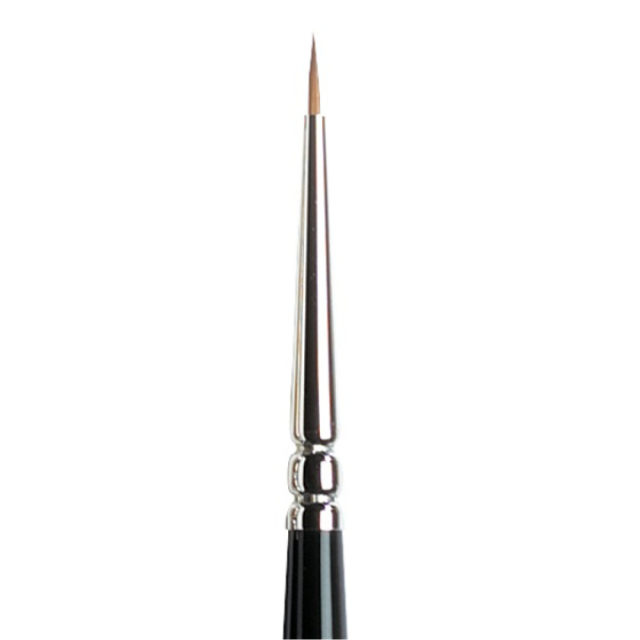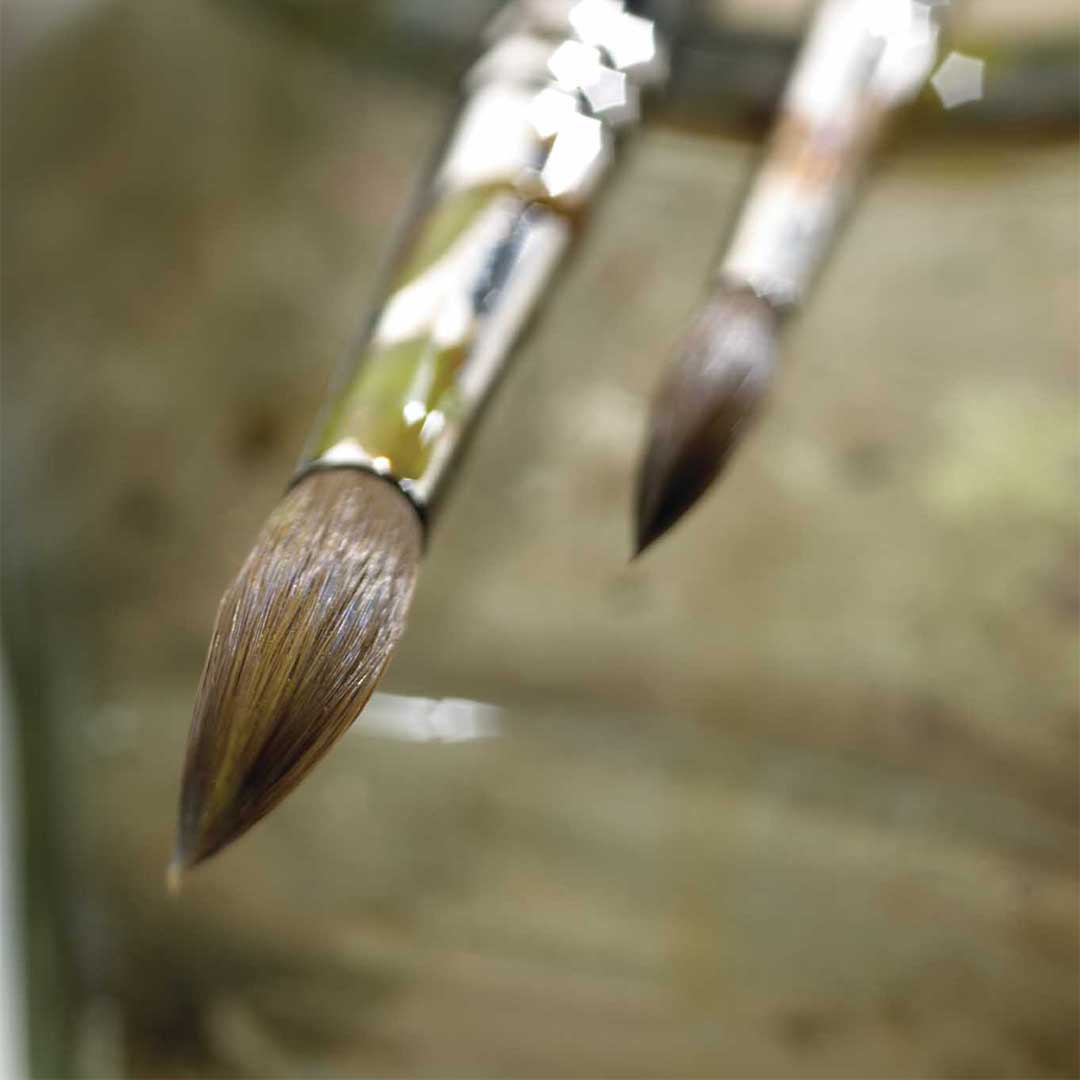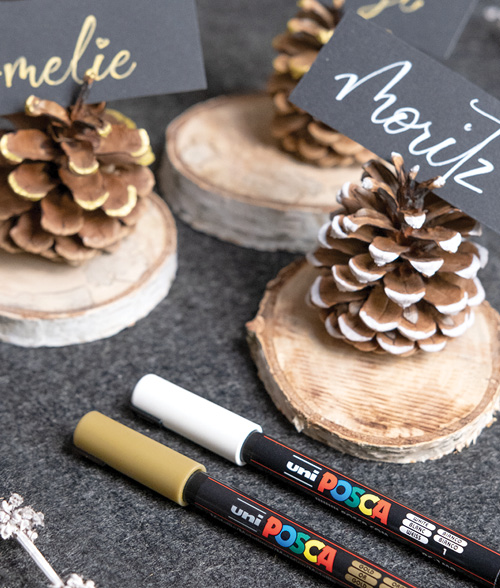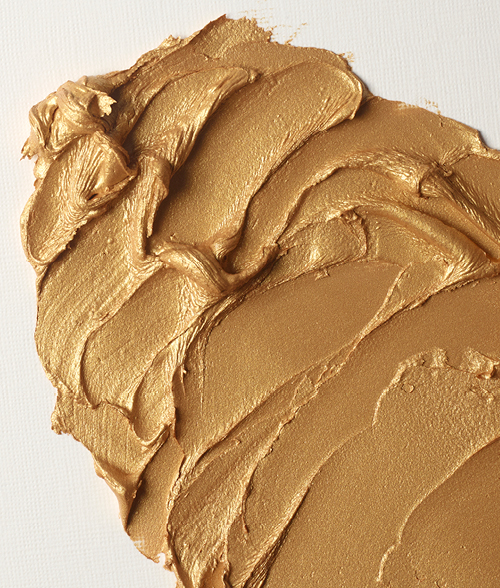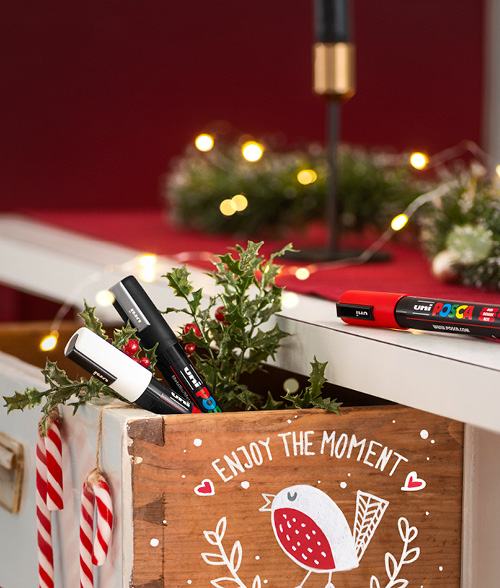Selecting the right brush can make a big difference to your creative work, whether you're painting with watercolour, acrylic or oil. In this guide, we’ll go through what to consider when choosing a brush, which types work best for different techniques, and how to care for your brushes to extend their lifespan. Read on to find the perfect brush for your style and project.
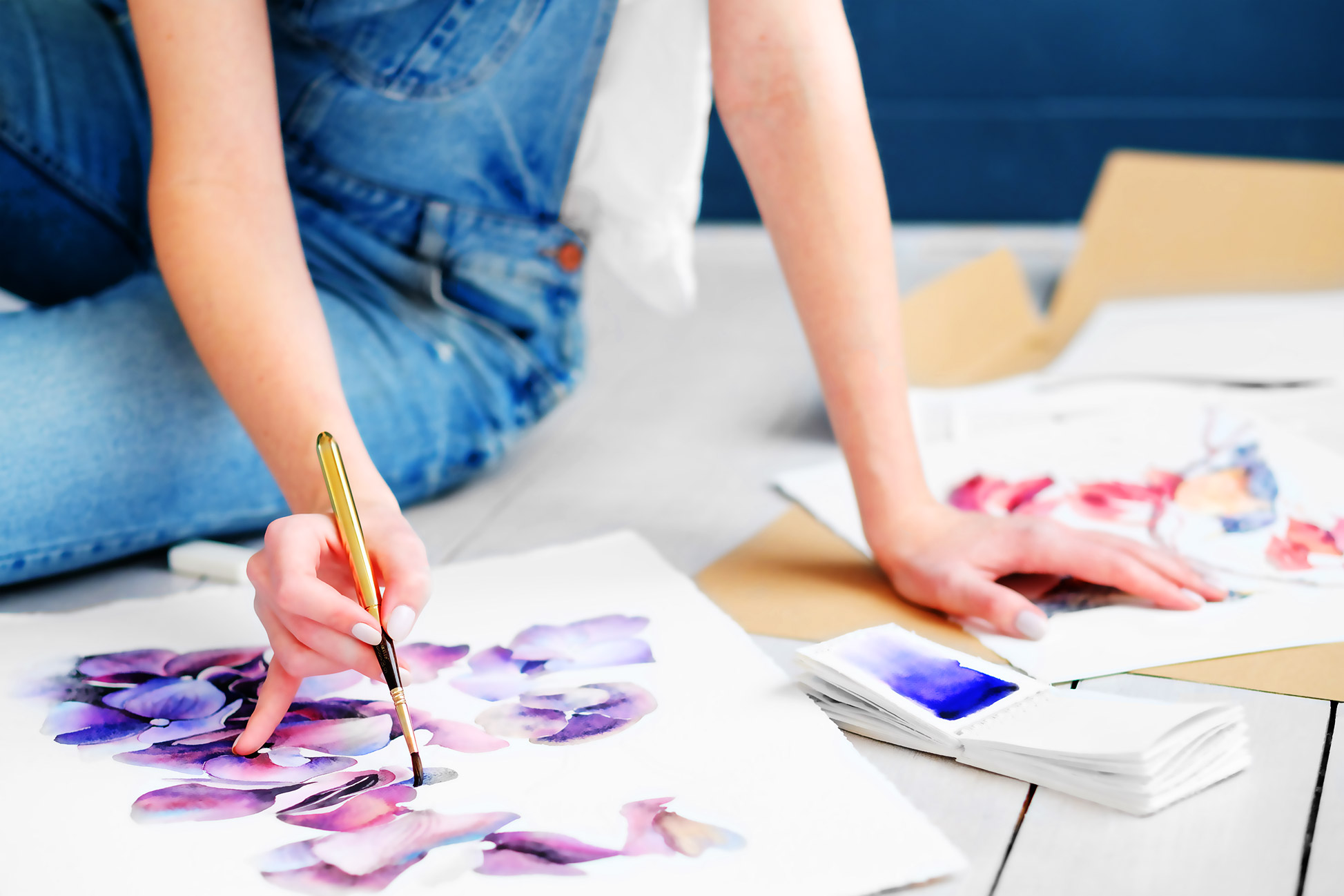
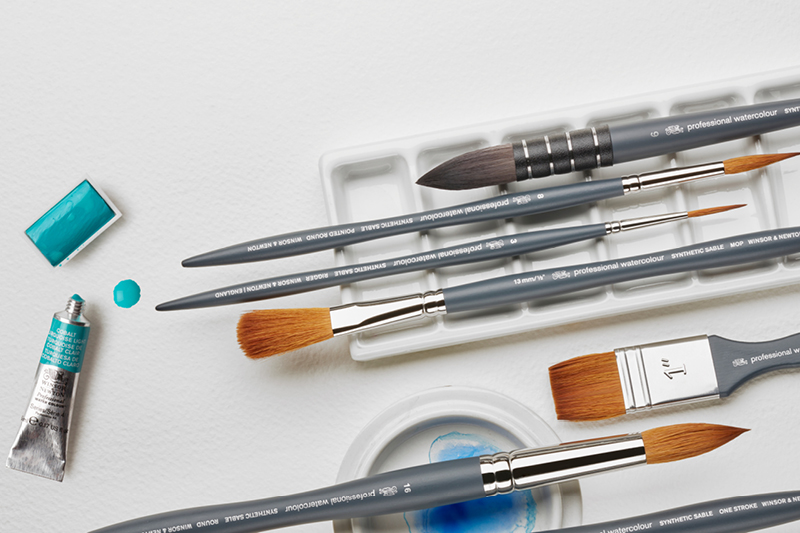
Brushes for Watercolour paint
A watercolour brush needs to hold a large amount of water and retain its spring. Today, watercolour brushes are available in both synthetic fibres and natural hairs such as sable, goat, and squirrel. Modern synthetic brushes are not only affordable but have been developed to offer the same high quality as natural hair, making them a popular choice among both beginners and professional artists. They are responsive, retain their shape well, and can create razor-sharp lines with their tip.
In a higher price range, you’ll find sable brushes, known for their exceptional spring and colour-holding capacity. They snap back naturally and provide excellent control for both soft washes and detailed work. Regardless of material, these brushes come in various shapes, round, flat, and oval, all suited to different watercolour techniques.
Brushes for Acrylic and Oil Paint
For acrylic and oil painting, you need firm brushes that can handle the thick texture of the paint. Brushes are available in both synthetic fibres and hog bristle. Hog bristle brushes are very popular and also come in more budget-friendly options. Alternatively, there are excellent synthetic brushes designed for use with acrylic and oil, featuring fibres in varying thicknesses. Whatever your project, it's useful to have a set with a variety of shapes and sizes. Brushes are made to be used!
When working with thick paints like acrylic and oil, it's especially important to clean your brushes thoroughly after each use. This significantly extends their lifespan and helps them retain their spring and shape. For more tips on brush care and choosing the right tools, take a look at our in-depth guides.
Synthetic Brushes
Synthetic brushes are a first choice for many watercolour artists. This is because you want the brush to absorb as much liquid as possible, making every stroke more expressive. A synthetic brush can absorb a lot of water and is often thicker to increase capacity. One important tip is to avoid touching the brush fibres with your fingers, as the oils from your skin can coat the bristles and reduce water absorption over time.
In recent years, synthetic brushes have improved significantly. They now offer very high quality and can mimic the properties of natural hair in terms of spring, softness, and fluid absorption. For many, they represent a more sustainable and animal-friendly option that doesn’t compromise on performance.
Hog Bristle Brushes
A brush made from hog bristle is ideal for heavier paints like oil and acrylic. No matter how much paint you load onto the brush, you want a stable tip that holds its shape with or without paint. Hog bristle brushes are very firm and retain their shape with ease. Their springy tip offers excellent control with every stroke.
Hog bristle is also perfect for creating visible texture in your painting, for example, in impasto techniques or sculptural brushwork. The bristles are durable and withstand heavy use, making them a reliable choice for artists who work with thick layers of paint and rough surfaces.
Squirrel Hair Brushes
If you're happy to spend a bit more on a brush, we recommend squirrel hair for its full-bodied bristles and superb spring. As mentioned earlier, a fuller brush is ideal for watercolour, and this is a dream come true for anyone seeking perfection. We can assure you that every stroke becomes an experience in itself!
Squirrel hair is renowned for its outstanding ability to hold large amounts of water and pigment, allowing for long, even strokes without needing to reload the brush. It forms a fine tip, making it a versatile choice for both broad washes and detailed work. Every brushstroke becomes a tactile experience, especially for those who appreciate a classic, natural material with superior feel.
Sable Hair Brushes
Sable brushes are another premium choice when it comes to responsive, full-bodied tips, exactly what many watercolour painters are looking for. Sable hair offers a unique combination of excellent water retention, precision, and control. The hairs are naturally tapered, forming a distinct point while holding plenty of fluid in the base.
There are different types of sable, and the distinction between a sable brush and a Kolinsky sable brush lies in quality and origin. Kolinsky is a highly sought-after type of Siberian sable, with hairs taken from the tail. This region offers the best combination of spring, elasticity, and softness. Kolinsky brushes are often considered the finest available for watercolour painting.
What truly sets a sable brush apart is its ability to retain its shape. You can test this by pressing the brush against paper, when you lift it, the tip snaps right back into its original shape, ready for the next stroke. This makes the brush incredibly responsive and reliable, especially in techniques that demand both precision and fluidity. For the serious painter, this is a tool you can rely on, every time.
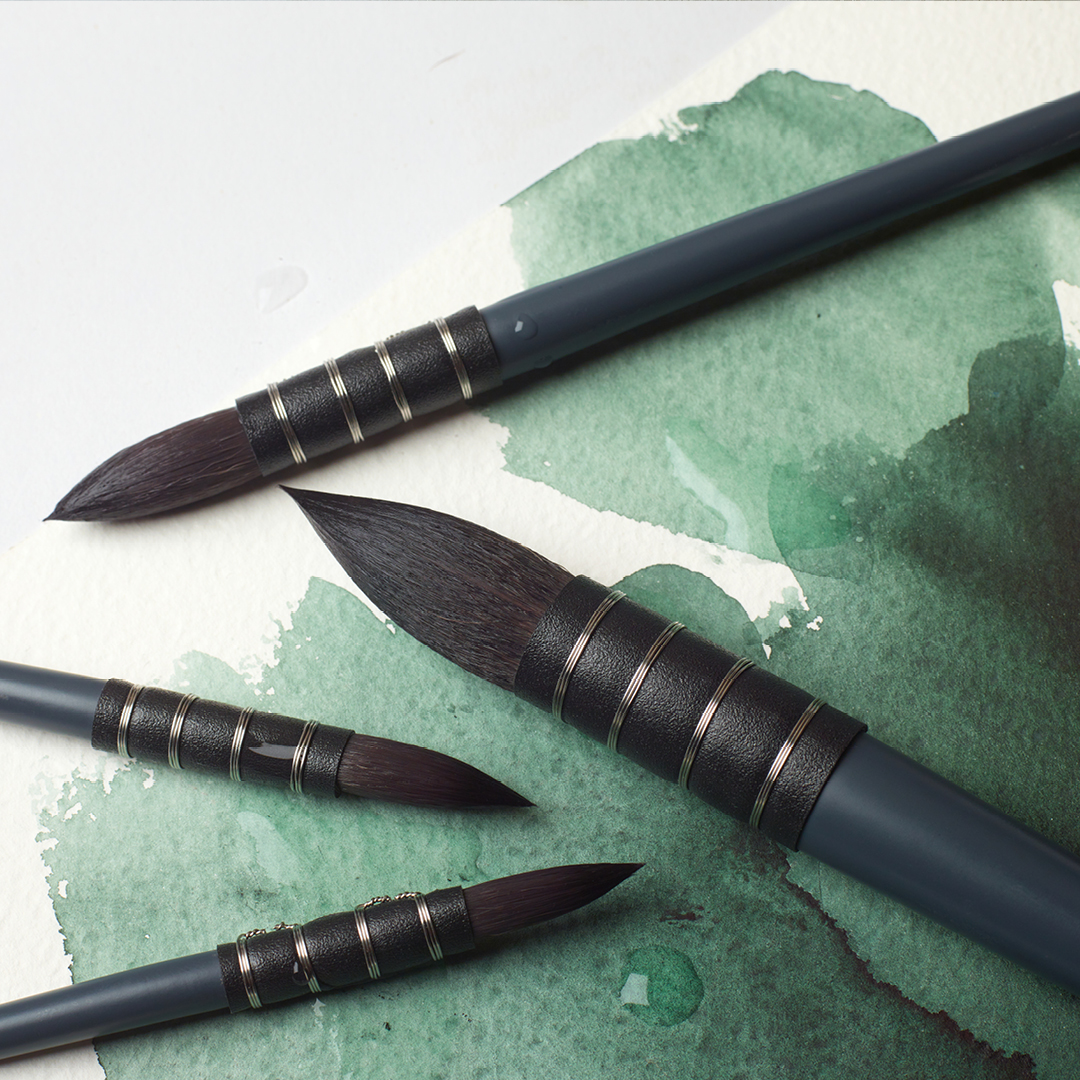
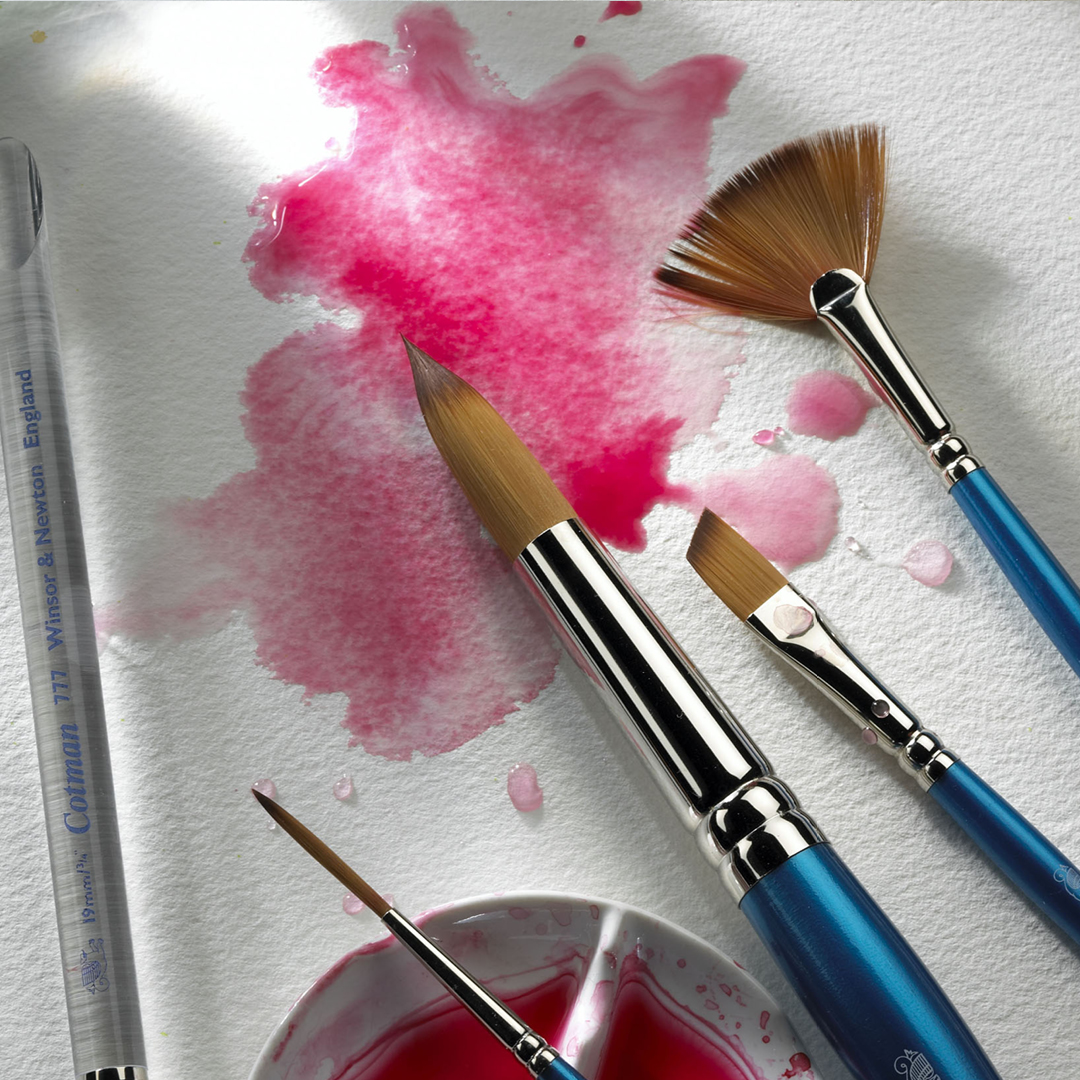
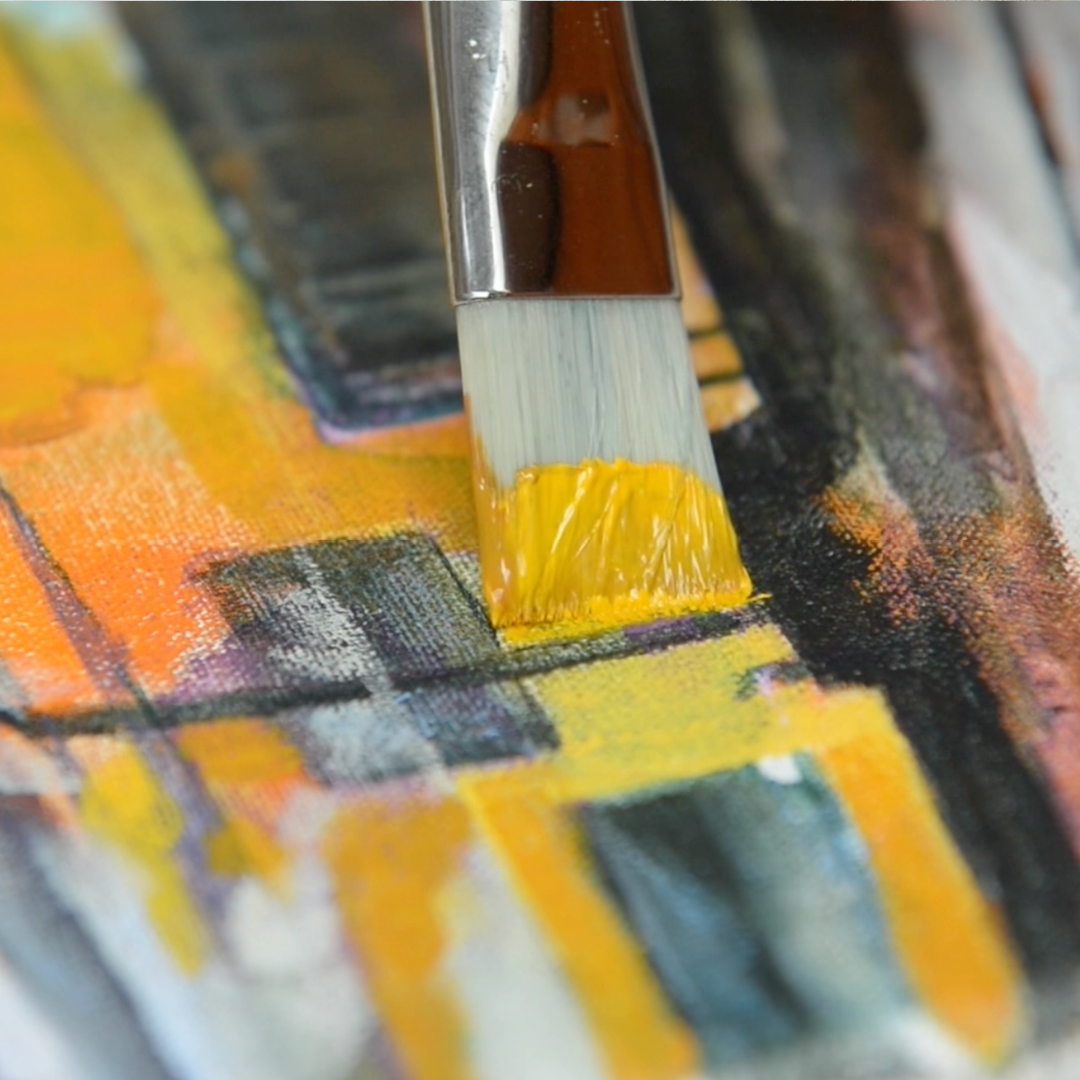
 Ireland (EUR)
Ireland (EUR)

